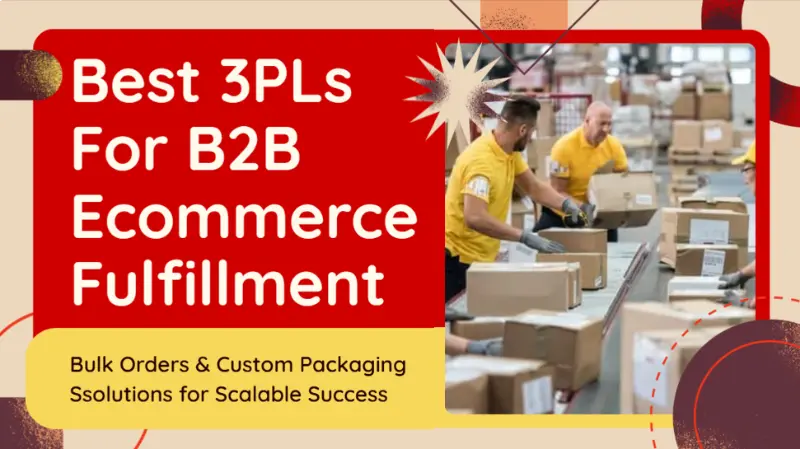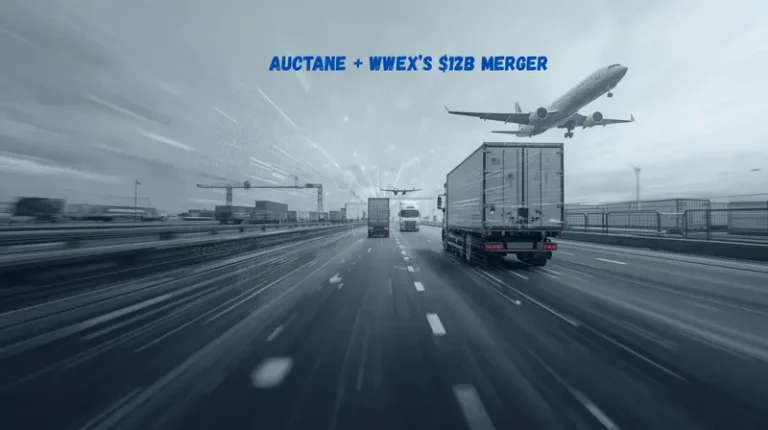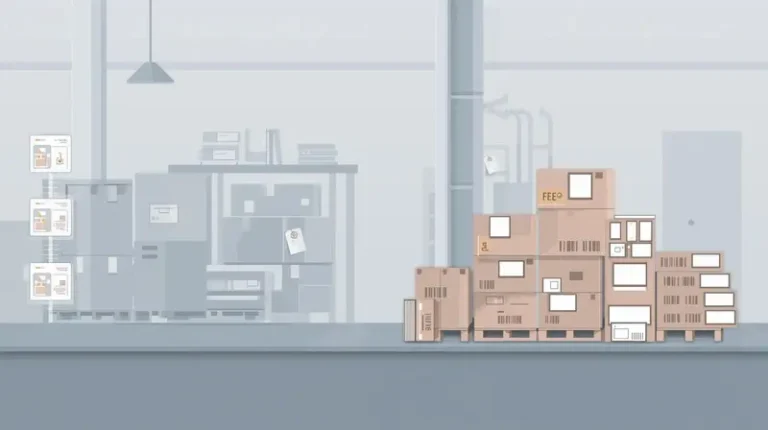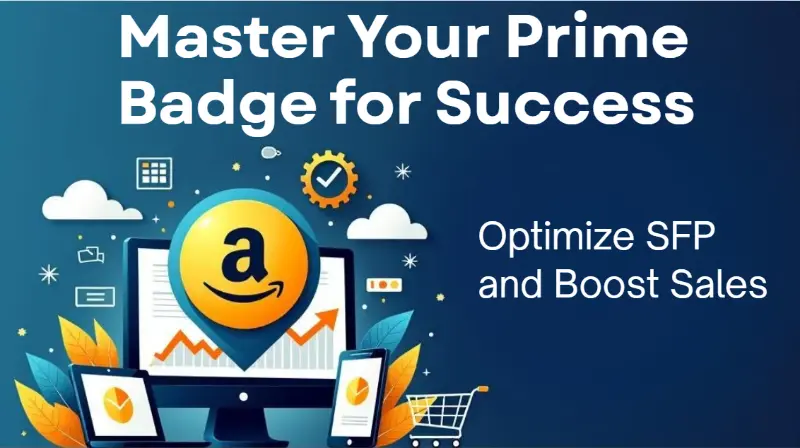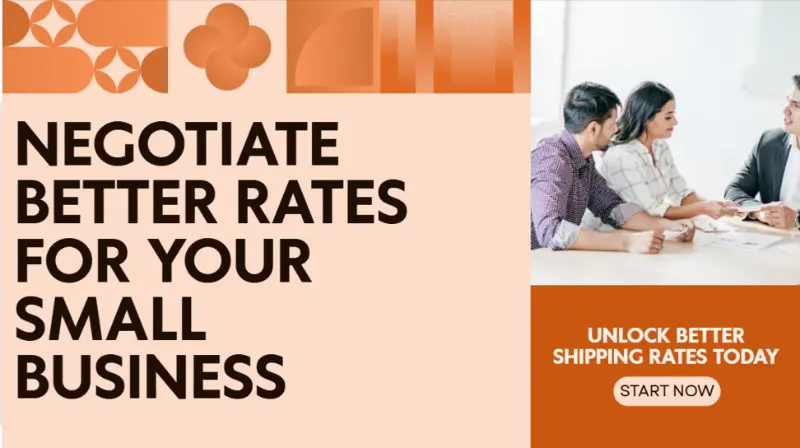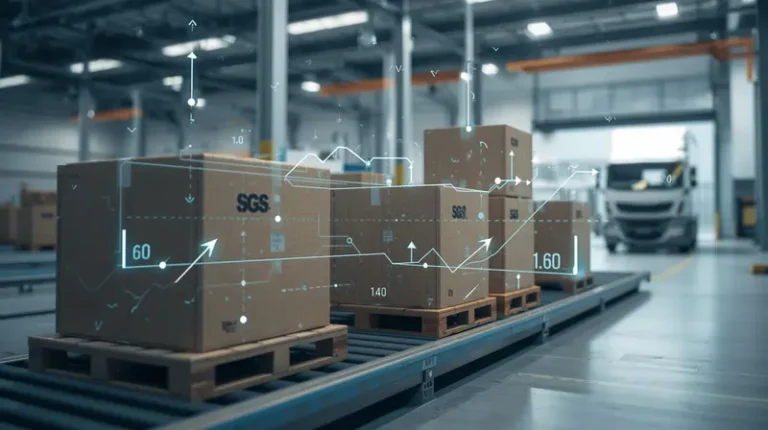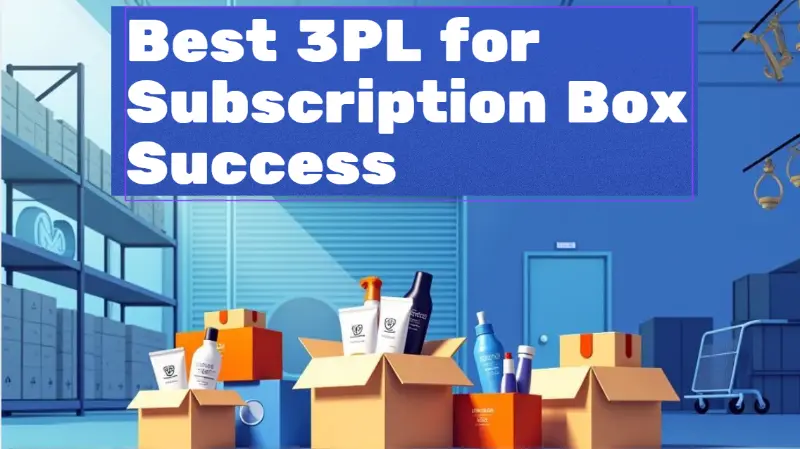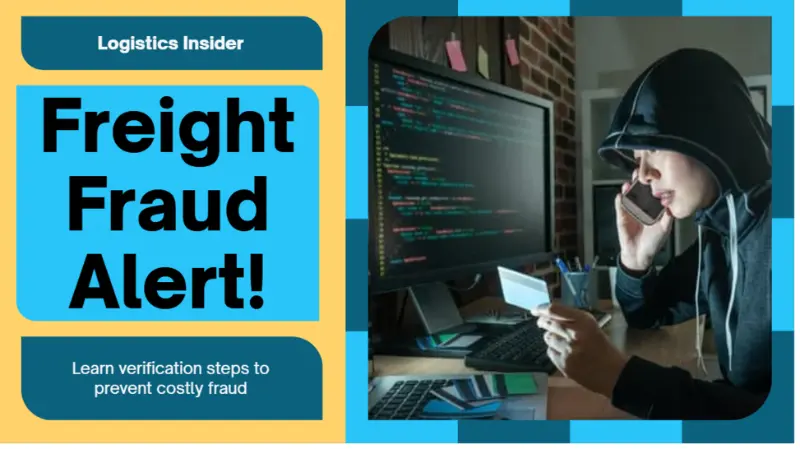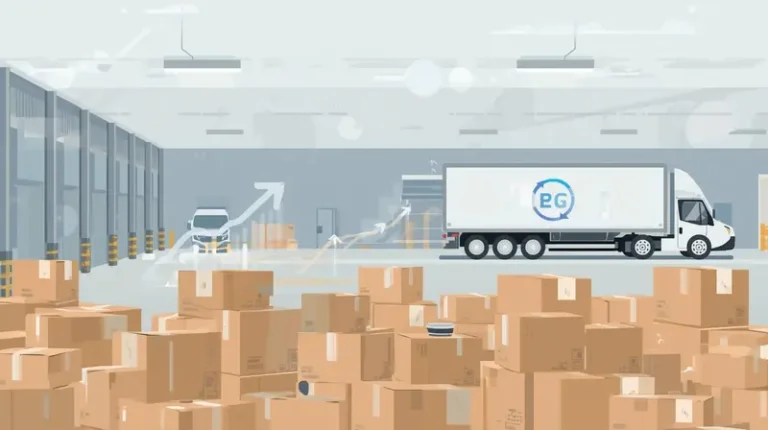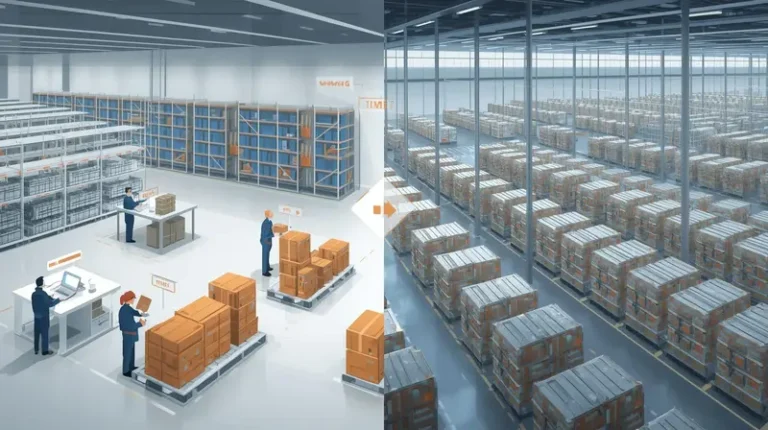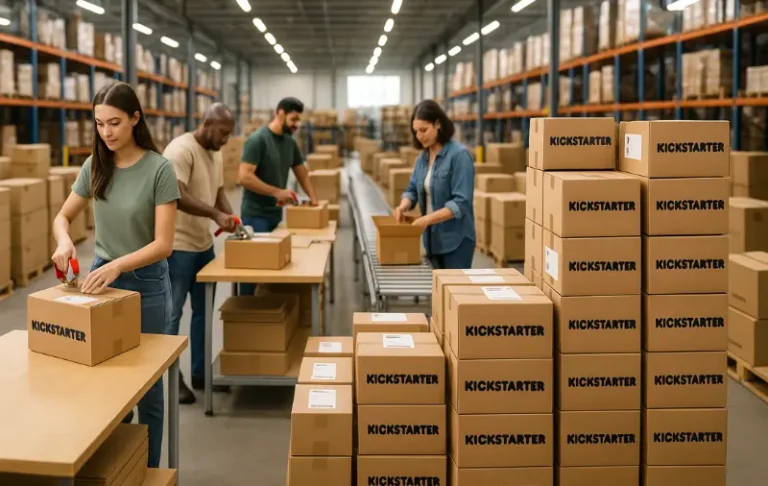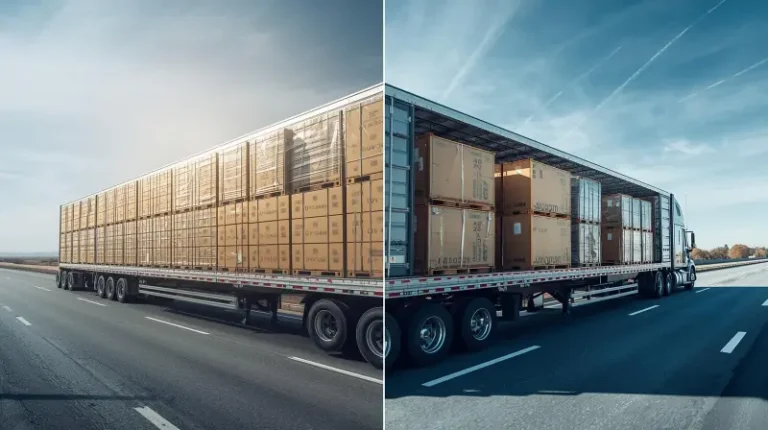B2B Ecommerce Fulfillment: How 3PLs Deliver Bulk Orders & Custom Packaging
Most people think ecommerce fulfillment is about one box, one customer. B2B stands for business-to-business, and B2B ecommerce fulfillment refers to transactions between one business and another. B2B ecommerce fulfillment flips that script; now it’s pallets, custom packaging, multi-SKU coordination, and one order worth tens of thousands of dollars. The key difference between B2B and B2C fulfillment is that B2B involves more complex, customized logistics, while B2C is more standardized. If you treat that like a B2C shipment at scale, you’re setting yourself up for disaster.
Here’s the reality: B2B fulfillment isn’t harder because it’s “bigger.” It’s harder because the stakes are higher; relationships, service levels, and reputational risk hinge on every single shipment. B2B ecommerce fulfillment is a multifaceted process involving complex logistics, inventory management, and order handling. So let’s talk about how 3PLs that know what they’re doing handle bulk orders, custom packaging, and why it matters for your business growth.
Why B2B Ecommerce Fulfillment Is a Different Beast
B2B fulfillment isn’t just “more volume.” Unlike B2C, B2B fulfillment involves transactions between other businesses rather than individual consumers. Here are the key differences between B2B and B2C fulfillment:
- Bulk orders with complexity: Multiple SKUs per order, different pack-out requirements, and scheduled delivery windows. Miss one spec, and you’re issuing credits or losing a contract.
- Custom packaging for business clients: These aren’t unboxing videos; these are brand impressions for their customers. B2B fulfillment is tailored to the specific business needs of clients. Botch the branding, and you look unprofessional to their buyers.
- Strict service-level agreements (SLAs): On-time and accurate aren’t suggestions; they’re contractual. B2B fulfillment often involves shipments to retail stores or business locations, unlike B2C, which serves individual consumers. One missed SLA could mean financial penalties or worse.
- Integration with business systems: You’re not emailing updates; you’re syncing with EDI, ERPs, and procurement platforms.
A third-party logistics provider (3PL) must be built for this complexity, or you’ll end up firefighting every month.
Slash Your Fulfillment Costs by Up to 30%
Cut shipping expenses by 30% and boost profit with Cahoot's AI-optimized fulfillment services and modern tech —no overheads and no humans required!
I'm Interested in Saving Time and MoneyHow 3PLs Handle Bulk Orders Without Dropping the Ball
1) Advanced Order Management
Top-tier B2B fulfillment partners use order management systems designed for business clients, emphasizing efficient management to meet the complex needs of B2B order fulfillment:
- Aggregate multi-line orders accurately and manage orders efficiently through a centralized dashboard.
- Allocate inventory across fulfillment centers with precision.
- Flag exceptions early, before they become missed SLAs, to minimize errors in the fulfillment process.
2) Dedicated Account Management
B2B relationships live and die on communication. The best 3PLs:
- Provide a dedicated account manager who knows your business inside and out.
- Offer proactive updates on order statuses, potential delays, and performance metrics.
- Escalate issues before they hit the customer’s desk.
3) Bulk Handling Expertise
Bulk isn’t just “more boxes.” It’s about handling wholesale orders with specialized bulk handling expertise, including:
- Pallet optimization: stacking configurations to minimize freight costs and damage risk.
- Kitting and assembly: pre-building kits for business promotions or seasonal needs, these are value-added services that 3PLs offer to enhance supply chain operations.
- Labeling precision: adhering to retail or distributor compliance requirements, GS1 labels, ASN accuracy (Advance Shipping Notice), and meeting the specific packaging and shipping protocols required by big box stores.
4) Custom Packaging Done Right
Custom packaging isn’t fluff; it’s a B2B competitive advantage:
- Reflects your client’s branding standards exactly and can be tailored to customer preferences for branding and presentation.
- Supports sustainability mandates (eco-friendly materials, minimal waste).
- Adjusts quickly to changes, new designs, temporary campaigns, or client-specific configurations.
5) Inventory Visibility & Control
B2B clients need real-time visibility into stock levels and order statuses, making advanced inventory management systems essential for efficient operations. Modern 3PLs deliver:
- Live dashboards: with stock, order progress, fulfillment KPIs, and real-time monitoring of inventory levels.
- Automated replenishment alerts: preventing stockouts and missed POs.
- Analytics: so you can forecast demand, optimize inventory investment, and prevent supply chain disruptions by identifying risks early.
How Businesses Should Prepare for B2B Fulfillment Success
Even with a great 3PL, your success depends on how you partner. Building a successful partnership with your 3PL is essential for smooth logistics operations and long-term growth:
- Share accurate forecasts and upcoming campaign details early.
- Standardize product data, labeling, and packaging specs.
- Build strong relationships with your account manager, treat them like a fulfillment partner and an extension of your team.
- Audit your 3PL’s operational excellence: error rates, on-time performance, and compliance metrics to ensure you have chosen the right fulfillment provider for your business.
- Remember, effective partnerships are key to empowering businesses to focus on growth and core operations.
Real-World Example: When It All Clicks
A mid-sized skincare brand, operating as an ecommerce business, scaled to major retail partners by leveraging a 3PL that:
- Integrated with their ERP for seamless order flow.
- Provided expertise in b2b order fulfillment for ecommerce businesses, handling bulk seasonal launches with custom display packaging.
- Maintained 99.95% on-time fulfillment across 4,000+ monthly B2B orders.
- Result: fewer chargebacks, happier retail partners, and a stronger bottom line.
Looking for a New 3PL? Start with this Free RFP Template
Cut weeks off your selection process. Avoid pitfalls. Get the only 3PL RFP checklist built for ecommerce brands, absolutely free.
Get My Free 3PL RFPWhat To Do Next
- Review your current fulfillment SLAs; are they being met consistently?
- Ask your 3PL how they handle custom packaging changes mid-campaign.
- Demand real-time inventory visibility if you don’t have it already.
- Run a mock bulk order audit, track how long it takes from receipt to ship, and whether it hits compliance standards.
- Review your 3PL’s service offerings and whether they provide a comprehensive suite of solutions, including returns management, kitting, and custom packaging. For a structured process, see the RFP Template for 3PL Partner Evaluation.
- Evaluate the 3PL’s technological capabilities and their ability to provide seamless integration with your ecommerce platform for real-time data exchange, order tracking, and inventory management.
The Bottom Line
B2B ecommerce fulfillment is where logistics meets reputation, supporting sustainable growth and operational efficiency for your business. Bulk orders, custom packaging, and high-stakes SLAs demand a level of precision most B2C-focused providers can’t match. Partnering with a specialized 3PL offers numerous benefits, including cost efficiencies through freight consolidation and exceptional service that meets the unique demands of B2B buyers. Choose the right partner, and you’ll not only meet expectations, you’ll turn fulfillment into a competitive weapon that drives higher customer satisfaction.
Frequently Asked Questions
How Is B2B Ecommerce Fulfillment Different from B2C?
B2B involves bulk shipments, strict SLAs, custom packaging, and system integrations like EDI. The key difference between B2B and business-to-consumer (B2C) fulfillment is that B2B focuses on bulk shipments to other businesses, while B2C serves individual consumers with individual orders. B2C fulfillment often deals with unpredictable demand, requiring flexible logistics to meet the needs of individual consumers. The key differences between these two models include order size, demand patterns, shipping methods, and customer expectations. It’s less about one-off orders and more about reliability and compliance at scale.
Why Is Custom Packaging Important in B2B?
It ensures your brand (or your client’s brand) meets professional presentation standards and compliance requirements, which can directly impact client retention and satisfaction. Many fulfillment services include custom packaging as part of their service offerings, allowing businesses to enhance their brand image and meet specific B2B requirements through their chosen fulfillment service.
What Metrics Should I Monitor for B2B Fulfillment?
Key metrics include on-time delivery rate, order accuracy, error rate per line item, and compliance adherence for packaging and labeling. Additionally, monitoring supply chain metrics is essential to ensure resilience and efficiency. It’s important to track potential supply chain disruptions, as well as analyze market trends and future trends, to anticipate changes and adapt your strategies accordingly.
Do I Need a Dedicated Account Manager?
Yes. Complex accounts require a single point of contact to coordinate logistics, handle escalations, and maintain proactive communication. A dedicated account manager also helps streamline processes, improving fulfillment efficiency and ensuring smoother operations.
How Do I Choose the Right 3PL for B2B Ecommerce?
Look for experience with bulk orders, proven SLA adherence, real-time inventory visibility, and strong references from other B2B clients. Evaluate fulfillment providers and the fulfillment company’s track record in handling complex B2B logistics. It’s important to choose a fulfillment provider that can efficiently serve the receiving business and other businesses, ensuring fast, accurate shipping and meeting the unique needs of B2B operations.

Turn Returns Into New Revenue

Amazon Prime Badge: How Sellers Can Optimize SFP Performance in 2025
In this article
 7 minutes
7 minutes
Seller Fulfilled Prime sounds like freedom on paper, but in reality, it’s THE toughest performance program in ecommerce. In 2025, keeping the Amazon Prime badge is a high-wire act; one late order, one canceled shipment, and the entire badge (and Buy Box visibility with it) can vanish. For Amazon sellers, the Prime badge isn’t just a logo; it’s shorthand for trust, speed, and credibility with millions of Prime customers. And Amazon enforces it with razor-sharp precision.
At Cahoot, we see every day how hard it is for sellers to balance those requirements while protecting margins. That’s why it’s worth breaking down what SFP performance really means today, the exact metrics Amazon is tracking, and how smart systems and strategies, not guesswork, are the only way to protect that coveted blue badge.
Why Seller Fulfilled Prime Badge Matters, and Why It’s Tougher in 2025
Prime customers are the holy grail: they convert higher, shop more often, and tolerate almost zero friction. Earning the Prime badge leads to higher sales due to increased visibility and trust among Prime members. Losing your Prime badge means your buy-box performance tanks, and your visibility plummets. In 2025, Amazon is watching you like a hawk: on-time delivery > 93.5%, cancel rate < 0.5%, and a lightning-fast response when a rare issue happens. Maintaining Prime eligibility and Prime status requires consistently meeting these key performance metrics to keep your products available to Prime members.
Here’s the kicker: supply chain disruptions linger, carrier delays still happen, and rate complexity trips sellers up. Amazon has seen Prime delivery complaints surge in early 2025, so they’re policing Seller Fulfilled Prime with more bots and automated reviews. To ensure customer satisfaction and provide excellent customer service, sellers must meet Prime members’ expectations for fast, reliable Prime shipping and quick issue resolution to retain the badge.
Slash Your Fulfillment Costs by Up to 30%
Cut shipping expenses by 30% and boost profit with Cahoot's AI-optimized fulfillment services and modern tech —no overheads and no humans required!
I'm Interested in Saving Time and MoneyThe Exact SFP Metrics That Make or Break You
Amazon mandates: new 2024 shipping and delivery policies
- On-Time Delivery Rate (OTD): ≥ 93.5% – Ship late, and your badge gets flagged.
- Valid Tracking Rate (VTR): ≥ 99% – missing or late tracking? End of story.
- Pre-Fulfillment Cancel Rate: ≤ 0.5% – every cancel hurts.
- Strict one- and two-day delivery promises across 48 states
- Minimum Product Detail Page Views by product size tier
- 100 minimum shipments per month to even qualify
To qualify for SFP, sellers must have a professional selling account and successfully complete the official trial period, meeting all required metrics.
Note: all across 30-day rolling windows. One bad quarter, and you’re up for manual review, or worse, auto-suspension. Managing shipping costs is also crucial for maintaining compliance with SFP requirements.
How to Nail SFP Performance (Even With Small Team or Lean Ops)
1) Build Speed into Ops, Not Hype
- Batch-pick orders early. Always aim to pack and hand off by midday, not the end of the day, to meet Prime’s fast standards for speedy delivery and fast and reliable shipping.
- Use shipping APIs that auto-prioritize Prime lanes without manual toggles to help ensure reliable shipping practices.
- Monitor ETA cutoffs for your regular carriers and test express backups, as reliable shipping is critical for meeting Amazon’s expectations.
2) Over-Deliver on Tracking
- Auto-push tracking as soon as the label prints.
- Validate tracking format before upload; Amazon bots punish malformed data.
- If your carrier is flaky, add a second provider or backup (especially for rural destinations).
- Implement real-time inventory tracking to ensure accurate order fulfillment and prevent stockouts.
- Monitor customer feedback related to shipping and tracking to quickly identify and resolve any issues.
3) Prevent Cancels like a CEO
- Never “hope it lands.” Hope is not a strategy. Use buffer stock, or auto-route to FBA if you’re under threat.
- Effective inventory management is crucial; monitor your storage space closely to ensure you have enough stock on hand and avoid last-minute cancellations.
- Understanding product category-specific risks can help you anticipate demand fluctuations and prevent stockouts that lead to cancellations.
- If a stock issue comes up, cancel proactively before the SFP badge gets flagged, and contact buyers where possible.
- Watch the “future release risk”; don’t oversell what isn’t in your warehouse yet.
4) Fix Defects Fast
- Set alerts for negative feedback or A-to-Z claims. Address and refund within 24 hours.
- Promptly address customer service inquiries to ensure customer satisfaction and resolve issues before they escalate.
- Monitor customer messages daily and respond within minutes.
- Providing excellent customer service is key to resolving defects and maintaining Prime eligibility.
- If a product causes repeated issues, pause SFP listings on it until the root cause is solved.
5) Use Tools That Ready Your Stack
- Dashboards like Cahoot’s surface SFP metrics in real time, flag at-risk orders, and suggest next actions. Leveraging real-time inventory tracking tools within your fulfillment process helps monitor stock levels, avoid stockouts, and ensure efficient order fulfillment.
- Automate reporting: have OTD, VTR, and cancel funnel dashboards you can glance at before Amazon does. Staying ahead in the competitive landscape requires continuous monitoring and adjustment of your SFP strategies to respond to changes and maintain high performance.
Stretch Goals That Keep You Ahead of the Curve
- Test local courier options in high-risk ZIP codes for same-day assurance.
- Stagger dispatch so that slow zones don’t pile up late-hand opening issues.
- Return workflows: quick pickups with prepaid labels reduce returns drag on ODR.
- Seasonal boosts: plan staff and carrier guarantees for Prime Day and holiday surges.
- Leverage exclusive deals and prime offers during events like Prime Day to boost sales and attract Prime members with special discounts and fast shipping.
- Integrate other sales channels, such as your own website or external marketplaces, to expand reach and maximize SFP performance.
Looking for a New 3PL? Start with this Free RFP Template
Cut weeks off your selection process. Avoid pitfalls. Get the only 3PL RFP checklist built for ecommerce brands, absolutely free.
Get My Free 3PL RFPWhat To Do Monday Morning
- Pull your last 30 days of SFP performance. If any metric is close to thresholds, act immediately.
- Review real-time inventory tracking data to quickly identify potential stockouts or overstock issues.
- Evaluate your fulfillment process for efficiency, ensuring all steps from packing to shipping meet Amazon’s requirements.
- Monitor shipping fees closely to maintain profitability and consider strategies to reduce costs or offer free delivery where possible.
- Confirm courier ETA averages vs. Amazon cutoff times. Adjust the clock.
- Embrace the tool that automates tracking validation and alerts.
- Run test orders to rural areas to audit actual delivery performance.
The Bottom Line
Maintaining the Prime badge via SFP is no mystery, it’s detail and discipline wrapped in speed. The brands that nail it aren’t the fastest; they’re the most consistent. They protect margins because they built structural resilience, not wishful workflows. Be precise, proactive, and responsive, and your Prime badge remains your best badge.
Frequently Asked Questions
How fast must I ship to keep the Prime badge?
Ideally, same-or-next-day pickup with your carrier, aiming for delivery well before the customer sees a “slower shipping” estimate. Late shipments still count, regardless of holidays or weather. Buffer, even one-hour picks help.
What’s the easiest way to avoid tracking-related issues?
Use shipping tools that auto-validate tracking numbers, ensure they follow Amazon’s format, and auto-upload to Seller Central through API. Manual uploads always risk errors or mismatches.
My Amazon cancellation rate is high. How do I fix it?
Inventory buffer. Auto-route to FBA when stock dips. Or proactively cancel orders before they ship and offer a solution. One preventative cancel is better than badge loss.
What should I prioritize for SFP if I’m juggling orders and compliance?
OTD and Page Views. Those two metrics matter more than any other. If both are healthy, minor tracking glitches are usually forgiving.
Can I use multiple carriers for SFP?
Yes, and you probably should. Multi-carrier strategy protects against one carrier’s delays, system outages, or regional slowdowns. Just monitor all carrier performances vigorously.

Turn Returns Into New Revenue

Shipping Rate Negotiation: Small Businesses Winning Better Rates in 2025
I’ve been talking to small business owners lately, brands pushing $200K/year in shipping, and guess what? They’re getting discounts once reserved for Amazon-level volume. Yep, FedEx and UPS are wooing smaller shippers these days, because parcel volumes are dropping and carriers need your business. That means you can play a smarter game: negotiate shipping rates with data, with options, with confidence, not by chance. Freight rate negotiation is now a strategic process accessible even to smaller shippers, allowing them to secure more favorable rates through preparation and informed discussions.
Let’s dig into how shipping rate negotiation really works. This is not your grandpa’s negotiation; data, technology, market leverage, and clear processes are your weapons. These tools give small businesses a competitive edge in negotiations. And I’ll show you how to use them.
Before we dive in, remember: having a clear shipping strategy is essential to maximizing your negotiation outcomes.
Why Now Is A Sweet Spot for Negotiation
Here’s a little nugget from the Wall Street Journal: FedEx and UPS are now offering meaningful discounts, even to shippers with under $500K in annual spend, because parcel volume has dipped, and they want to woo volume with rates, not rocket fuel. In fact, they dropped ground parcel prices by 2.5% in the latest quarter, thanks to lighter packages and aggressive targeting of small businesses. The main focus of these negotiations is the freight rate, which determines your overall shipping costs.
This matters because you’re not too small anymore. If you can articulate your shipping profile, volume, box size, lane mix, and distance traveled, you’re at the negotiation table. Carriers consider various factors such as volume, box size, and distance traveled when determining your eligibility and leverage. And they’re listening. That’s your edge.
Slash Your Fulfillment Costs by Up to 30%
Cut shipping expenses by 30% and boost profit with Cahoot's AI-optimized fulfillment services and modern tech —no overheads and no humans required!
I'm Interested in Saving Time and MoneyThe Data Strategy That Will Win You Rates
You can’t negotiate what you can’t measure. That means build a shipping profile:
- Monthly and seasonal volumes
- Average weights, dimensions
- Delivery zones (local vs residential vs international)
- Service mix (Ground, Express)
- Historical surcharges exposure
- Detailed data on shipments and costs
- Historical rates for similar shipments
Providers like TransImpact and Cahoot help you package that data in tables and visuals that carriers understand instantly. These platforms also provide insights into your shipping patterns and costs.
Armed with that, you’re not guessing; you’re showing them they’ll win by giving you better terms, especially when you include carrier performance metrics to strengthen your negotiation position.
Secrets for Smarter Negotiation (Not Just Talking)
When negotiating shipping contracts, understanding what negotiation takes, such as thorough preparation, leveraging accurate data, and understanding carrier priorities, can make a significant difference in your outcomes.
1. Benchmark your rates – See what peers are paying. Use industry groups or public references to position your ask (“My competitor in XYZ is getting 8% off freight, can you match?”). Focus your negotiation efforts on key spend areas to maximize impact.
2. Understand carrier cost logic – Fuel surcharges, DIM weight, remote zones. Knowing these gives you angles to push: “If you waive DIM on a 12-inch item, I can drop 5% overall spend.”
3. Negotiate accessorials separately – Detention fees, address correction, liftgate. Carriers love bundling; you should unbundle.
4. Use multi-carrier leverage – If USPS is cheaper for your light parcels, say so. Let UPS/FedEx know; they don’t like losing lanes to postal networks. Negotiating rates with multiple carriers can help you secure lower rates (more favorable rates) for your shipments.
5. Watch contract terms – Commit to a carrier for a volume guarantee in exchange for a better base rate or waived surcharges. Be crystal clear on the term, volume, and exit right. Negotiate for more favorable terms, including payment terms, service agreements, and volume discounts as part of your long-term agreements.
Always aim for the best possible terms and seek rate reductions where possible to optimize your shipping costs.
Ongoing Tactics That Multiply the Savings
- Rate shop regularly – Rates shift weekly. Monitor and push adjustments mid-contract. Compare multiple carriers and different carriers to secure more competitive rates, leading to significant savings.
- Invoice audits = hidden gold – Use tools or 3PL data to catch surcharges, billing errors, and renegotiate or reclaim them. Auditing shipping invoices helps reduce costs and control shipping expenses.
- Test regional or hybrid carriers – They often undercut national carriers, especially for local or B-city lanes. A/B test them quietly, and consider different transportation modes for a cost-effective way to optimize operating costs.
- Cheaper packaging saves percentage points – Cut DIM weight with smarter materials and save postage with no change to shipping speed.
These ongoing tactics drive cost savings (significant savings) over time. Leveraging technology and process improvements can also streamline operations and enhance shipping operations for even greater efficiency.
Looking for a New 3PL? Start with this Free RFP Template
Cut weeks off your selection process. Avoid pitfalls. Get the only 3PL RFP checklist built for ecommerce brands, absolutely free.
Get My Free 3PL RFPWhen to Walk Away
If your baseline margin is too thin, even a “discounted” rate still kills profit; it’s fine to say no. Your goal isn’t just “save on shipping,” it’s “protect the margin.” Be ready to walk. This can put you in a stronger position during negotiations, especially if you have a deep understanding of your shipping needs and costs before making the decision to walk away. It refocuses carriers on your value, not desperation.
What To Do First Thing Monday
- Pull your last 6 months of shipping data and sketch a profile to identify opportunities for negotiation and cost reduction.
- Use rate-shopping software or Cahoot-like platforms to auto-compare.
- Email your carrier account manager: “Let’s review my T1 rates. I’m seeing aggressive pricing in the market for small shippers.”
- Ask for accessorial waiver proposals or season-based incentives.
- Audit your last month of bills for unexpected surcharges or weight adjustments.
Bottom Line
Your shipping rate negotiation isn’t about volume; it’s about value. You bring well-packaged data, clear lane logic, and a willingness to shift to whichever carrier rewards you with better terms. The playing field is tilted your way right now. Use it; these strategies set you up for successful negotiations and better outcomes.
Frequently Asked Questions
What’s the single most important prep for negotiating shipping rates?
Build a shipping profile that outlines your volume, zones, surcharge history, and service mix. Data is your ticket to credibility at the negotiation table.
Can really small businesses get discounts too?
Yes. Carriers like FedEx and UPS are offering discounts to smaller shippers (<$500K spend) right now; they need the volume, you need the edge.
Should I commit to one carrier long-term for better rates?
Only if you’re confident you hit forecasted volume and get a rate break or surcharge waiver. Make the terms explicit: volume thresholds, penalties, and exit clauses. While committing to a single carrier can simplify operations and potentially secure better rates, relying solely on a single carrier may reduce your flexibility and negotiation power compared to a multi-carrier approach.
How often should I renegotiate?
Every quarter, if possible. Rates and surcharges move fast. Quarterly check-ins and invoice audits help you catch leaks and push for adjustments mid-cycle.
What’s better: deepest rate or multi-carrier flexibility?
Start with the deepest rate per lane, but build flexibility. Always seek the best rate for each shipment to ensure cost-effectiveness. Carriers love loyalty, but over-dependence locks you in. Rate shop dynamically to maximize savings.

Turn Returns Into New Revenue

Subscription Box Fulfillment Services: How to Scale with Reliable 3PL Solutions
In this article
 8 minutes
8 minutes
- What Makes Subscription Box Fulfillment Special
- What Subscription Commerce Logistics Must Deliver
- Real-World Scenarios Where Subscription Fulfillment Isn’t “Same as Ecommerce”
- What I’d Ask Before Signing with a 3PL For Subscription Fulfillment
- What You Can Implement Right Now
- The Bottom Line
- Frequently Asked Questions
I used to think fulfillment is fulfillment; until I helped a subscription business through a crash and burn because their 3PL treated “recurring shipment” like one-off orders. It wasn’t meager: wrong items, late boxes, branding mismatches. Cancelling subscriptions was faster than refunding half the month’s payments. Trust me, subscription box fulfillment services require a whole different playbook. Subscription box fulfillment demands a specialized fulfillment process designed to handle the unique needs of recurring shipments and ensure accuracy and consistency every cycle.
So let me walk you through the real-life, “don’t learn this the hard way” guide, how subscription commerce logistics differs, what recurring shipment 3PL solutions should offer, and how you keep customer loyalty at peak by consistently meeting or exceeding customer expectations, even when inventories wobble or your curation changes week to week.
What Makes Subscription Box Fulfillment Special
Subscription box fulfillment is not just sending parcels, it’s about rhythms and relationships:
- Recurring shipment expectations: Subscribers expect that box, every cycle, on a recurring basis. Miss it twice and you’re not a brand; you’re spam.
- Inventory choreography: You’re juggling curated kits, limited-run add-ons, and rolling replenishment. Managing inventory levels and stock levels is crucial; one SKU out of stock means a box looks incomplete (and customer loyalty cracks).
- Packaging equals brand identity: Those custom-branded packaging costs matter. A branded box is a key element that reinforces your brand identity. Miss the design or quality? It’s a crash to your reputation.
- Fulfillment visibility: You need real-time visibility so you can control expectations and de-escalate delays fast.
As your subscriber base grows, scaling fulfillment operations becomes essential to maintain service quality and customer satisfaction.
Slugging through all this yourself? That’s why you need subscription box fulfillment services that are tailored, not generic.
What Subscription Commerce Logistics Must Deliver
1) Predictable, Time-Sensitive Execution
A solid subscription fulfillment partner understands the tick-tock: you need pick-and-pack on day X, shipped on day Y, in customers’ hands on day Z. Even a 24-hour slip shrinks the window to delight. Timely deliveries and timely and accurate deliveries are crucial for customer satisfaction, as subscribers expect their products to arrive on schedule. Accurate deliveries are also essential to maintaining trust and retention.
They deal with buffer stock options, seasonal surges, and replenishment pulls without the chaos, efficiently managing order volume to ensure scalable solutions. You don’t get a “boys will be boys” excuse, just consistent flow.
2) Spot-On Inventory Management
Recurring orders mean forecast sensitivity. Look for 3PLs with real-time inventory tracking, robust warehouse management, and advanced systems that support low-stock alerts and auto-reorder thresholds for components, especially with curated subscription boxes that change each cycle. Advanced technology can further optimize inventory management and ensure accuracy throughout the fulfillment process. Leveraging data-driven insights also helps improve forecasting and inventory decisions.
You’ll retain customers when every box feels fresh and fully stocked, not “I’ll order again if and when they have everything.”
3) Branded and Custom Packaging That Doesn’t Hurt Your Margins
Subscription box fulfillment companies must marry design and cost control:
- Offer branded boxes, inner sleeves, stickers, filler, eco-friendly packaging materials, and custom boxes, but help you source them.
- Balance quality control so your boxes feel premium, but also let you tweak or swap designs mid-season, contributing to a memorable unboxing experience.
- And handle supply chain surprises, if your eco-friendly material runs out, they suggest equivalent substitutions, not “ship plain boxes.”
Creating a unique unboxing experience is essential for fostering customer loyalty and differentiating your brand.
4) Real-Time Tracking & Communication
One bad experience: a lovely unboxing disrupted by “shipment delayed” with no update. Your fulfillment provider must:
- Offer real-time tracking to your system and the customer’s inbox, including sharing order details for transparency.
- Push automated updates, and alert you proactively if one batch falls behind.
- Let your dashboard show you shipment progress and exceptions in seconds, as proactive communication is essential for meeting customer expectations.
5) Data-Driven Logistics to Improve Retention
Subscription isn’t set-it-and-forget-it. The smart fulfillment partners:
- Give you metrics on box fill rate, promise vs actual ship date, and inventory tracking, all of which are crucial for improving customer retention.
- Help you use that data to make informed decisions that reduce costs and improve efficiency: if custom packaging isn’t helping retention, redesign. If a certain kit item underperforms, swap it next cycle.
Leveraging data-driven logistics not only enhances performance but also helps lower operational costs for subscription box businesses.
Real-World Scenarios Where Subscription Fulfillment Isn’t “Same as Ecommerce”
- Curation pivot mid-cycle: You sell out of a featured item and need to substitute. For any subscription box business or subscription box service, this is a common challenge. Your 3PL handles the swap, updates customers, and reroutes without chaos.
- Sudden inventory shift: Your coffee subscription’s East Coast warehouse runs low on finished product due to a supplier delay. Instead of leaving orders unfilled, your fulfillment partner reallocates stock from your West Coast facility or another pre-approved partner site within their network. The order ships on time, inventory records stay accurate, and your customers never see a hiccup.
- Quality surprise: A season’s custom tissue paper arrives misprinted. A good provider tags, rejects, sources replacements, and keeps fulfillment on track, even while you redesign. Maintaining quality control in these situations is essential for protecting your brand reputation and the brand’s reputation.
What I’d Ask Before Signing with a 3PL For Subscription Fulfillment
When evaluating each fulfillment company, it’s important to understand how most fulfillment companies handle key issues like shipping costs, hidden costs, and their experience as a third-party logistics partner for subscription box businesses. Here are some essential questions to ask:
1. How do you handle recurring shipment scheduling’s effect on labor and box cuts?
2. What’s your inventory alert logic? Can it prevent the dreaded “out of stock surprise”?
3. Custom packaging: Can you swap designs mid-series without excess waste or cost spikes?
4. Dashboard and comms: are delays visible and notifications automated?
5. What data do you report on: fill rate, mispacks, customer feedback loops?
6. Are there any hidden costs or fees in your pricing structure?
7. How do you manage shipping cost and shipping costs, and do you offer strategies to minimize these expenses?
8. What is your experience as a third-party logistics partner specifically for subscription box businesses?
What You Can Implement Right Now
- Audit your current fulfillment workflow, time from pick to delivery versus brand loyalty threshold, and identify areas to save time and improve efficiency.
- Ask your 3PL how they measure on-time delivery % specifically for recurring orders.
- Demand custom packaging change flexibility (mini-runs, design swaps, samples).
- Set up real-time dashboard alerts for inventory dips during order processing.
- Run a quarterly “what if” box, simulate a substitution or shortage, and timeline the customer experience.
- Consider outsourcing fulfillment or choosing to outsource fulfillment to a specialized provider to scale efficiently and streamline operations.
The Bottom Line
Subscription box fulfillment isn’t “shipping”; it’s choreography, communication, brand experience, and retention economy. For subscription businesses, just “handling orders” isn’t enough: you need subscription fulfillment partners that think ahead, swap fast, and protect your brand every shipment. Effective subscription box fulfillment not only supports a reliable revenue stream but also helps build meaningful connections with your customers, fostering loyalty and long-term engagement.
Do fulfillment thoughtfully, and your IT system becomes invisible; your customer thinks “they’ve got me.” Screw it up, or do the same as B2C, and you just burn renewable revenue. These strategies are essential for any subscription service, subscription services, or ecommerce businesses looking to scale recurring revenue and stand out in a competitive market.
Frequently Asked Questions
How Is Subscription Box Fulfillment Different from One-Off Ecommerce?
Fulfillment services for subscription boxes manage recurring shipments, evolving inventory, and branded consistency across cycles, whereas traditional ecomm is more ad hoc and SKU-stable.
Are Branded Boxes Worth the Cost?
Absolutely. Custom packaging shapes brand perception. A memorable unboxing contributes to customer loyalty and justifies premium pricing, or helps prevent churn.
How Can I Ensure I Don’t Run Out of Critical Inventory?
Partner with a 3PL that offers real-time inventory alerts and auto-reorder thresholds. You should be alerted to low stock long before the last master case is opened, not after.
Can Packaging Designs Really Be Swapped Mid-Season?
Yes, good fulfillment centers support flexible packaging runs. Ask for ability to pilot new designs or move to fallback options without cost cliffs or downtime.
What Metrics Should I Track for Subscription Fulfillment Success?
Track on-time delivery rate, box fill accuracy, customer re-order rate, and return or complaint reasons. Weekly reporting on these helps shape product, design, and supply planning.

Turn Returns Into New Revenue

Freight Fraud: Why Logistics Professionals Need to Stay Vigilant
In this article
 9 minutes
9 minutes
- The Freight Industry’s New Risk Math
- How The Most Common Scams Really Work (And Where Teams Trip)
- What I’d Implement Tomorrow If I Owned Your Brokerage (Or Fleet)
- Why The Fraud Curve Keeps Rising (And How To Bend It)
- Tools And Practices I Trust (And How I Deploy Them)
- What To Update In Your Contracts
- The Bottom Line
- Frequently Asked Questions
Freight fraud isn’t one scam; it’s a whole category of criminal business models feeding on a hyper-competitive, digitized freight industry. I’m talking identity theft of legitimate carriers, double brokering that ends in non-payment, fake profiles on load boards, and cargo theft that disappears shipments and dollars annually. If you touch loads, broker, carrier, or shipper, you’re in the blast radius.
I run logistics with a simple rule: assume bad actors are probing your systems every week. Not because you’re special, but because the freight industry itself is a target-rich environment. Fragmented systems, undertrained teams, pressure to cover loads now, and lots of sensitive information moving through email. That’s catnip for fraudsters.
Slash Your Fulfillment Costs by Up to 30%
Cut shipping expenses by 30% and boost profit with Cahoot's AI-optimized fulfillment services and modern tech —no overheads and no humans required!
I'm Interested in Saving Time and MoneyThe Freight Industry’s New Risk Math
Everyone feels the squeeze: rates down, fuel up, customers impatient. Hyper-competition creates more opportunities for shortcuts. Shortcuts create more openings for fraud. The logistics industry isn’t dealing with one-off incidents anymore; we’re living with a persistent threat where sophisticated schemes evolve faster than most companies update their practices.
Let’s call it what it is: freight fraud costs are rising, and the fraudsters are getting bolder. Double brokering, payment fraud, cargo theft, and identity theft now show up in various forms, compromised login credentials, spoofed emails, sold or stolen MC numbers, counterfeit COIs, cloned carrier websites, and even deepfaked voices on “verification” calls. The logistics sector’s old playbook, trust the paperwork, move the load, no longer maps to reality.
How The Most Common Scams Really Work (And Where Teams Trip)
1. Double brokering that turns into non-payment
A re-broker posts a fake or hijacked load, books a real carrier, and either never pays the carrier or swaps in a ghost carrier midstream. You’ll see mismatched domains, urgent tone, vague driver information, and last-minute banking changes. Freight brokers fall when the verification process is rushed or when one person is allowed to override policy “this one time.”
2. Carrier identity theft and fake profiles
Fraudsters impersonate legitimate carriers, sometimes with real DOT/MC details and a cloned website. They’ll provide doctored insurance and driver info, then vanish after pickup. Tell-tale signs: phone numbers that don’t match official listings, Gmail addresses on “legitimate carriers,” and COIs that don’t verify with the insurer.
3. Cargo theft with clean paperwork
Organized groups use social engineering to become the real broker on paper, then redirect a shipment to a shell yard. Legitimate carriers get stuck in the middle, shippers blame “the broker,” and recovery becomes a long shot. Metals, consumer electronics, food and beverage, apparel, high-value, easy-to-fence categories are red hot again.
4. Payment fraud that drains financial stability
BEC-style email compromises reroute payments. Fraudsters slip into threads, swap ACH details, and collect. If your AP team isn’t verifying identities with out-of-band call-backs, your “real broker” might be paying the wrong account for months.
Looking for a New 3PL? Start with this Free RFP Template
Cut weeks off your selection process. Avoid pitfalls. Get the only 3PL RFP checklist built for ecommerce brands, absolutely free.
Get My Free 3PL RFPWhat I’d Implement Tomorrow If I Owned Your Brokerage (Or Fleet)
This isn’t theory. It’s a practical verification process that protects operations without killing speed. Train employees; write it down; audit it monthly.
Looking for a New 3PL? Start with this Free RFP Template
Cut weeks off your selection process. Avoid pitfalls. Get the only 3PL RFP checklist built for ecommerce brands, absolutely free.
Get My Free 3PL RFP1. Identity and intent verification (every new partner, every time)
- Verify carrier identity from official sources, not the email signature. Use FMCSA SAFER, the carrier’s own website, and insurer call-backs to numbers you locate, not numbers they provide.
- Require real-time photo ID for the driver and dispatcher on video. Keep the call recording with the load file.
- Confirm COI straight with the insurance agent, not a PDF attachment. No exceptions.
- If the email domain is generic (Gmail, Yahoo), treat it as high risk even if everything “checks out.”
2. Dedicate one person to kill switches
- No last-minute banking or payment changes without an out-of-band phone verification to a known number on file.
- Suspend credit immediately if a partner refuses insurance verification or won’t do a quick video handshake.
- Lock payment terms until a first successful shipment clears without incident.
3. Secure your systems like you secure your yard
- MFA everywhere: TMS, load boards, factoring portals, email, cloud storage. If a login doesn’t support MFA (Multi-Factor Authentication), replace it.
- Restrict who can view full load details. Use role-based access so a compromised seat can’t harvest your entire book.
- Monitor for exposed credentials. If a password shows up in a breach, rotate immediately and re-train the user.
- Backstop with an allowlist of company-approved tools. No rogue spreadsheets with driver information on personal devices.
4. Tighten the load board workflow
- Build a “trust tier” for carriers, legitimate carriers you’ve vetted get first look at freight. New or unverified carriers go through the long-form checklist every time.
- Use watchlists and industry networks to screen for known bad actors. Share your own intel back to the network.
- Hide certain sensitive information in initial posts. Reveal pickup location and shipper name only after verification.
5. Pick up security measures at the dock
- Two-factor pickup: photo ID matches the driver’s info on file, and the truck’s plate matches what dispatch provided earlier.
- Geofence the pickup and capture a geo-tagged arrival photo in your app.
- Use one-time PINs at handoff. Record BOL photos and seal numbers in the app; require the driver to sign digitally.
- Train warehouse staff on scripts and escalation. If anything smells wrong, the shipment waits. Period.
6. Payment controls that actually prevent loss
- Micro-deposit verification for new bank accounts and changes to vendor records.
- Segregate duties: the person who verifies bank changes is not the person who releases payments.
- Factor with visibility. If you factor, require that your factor run separate fraud checks on re-brokers and carriers.
7. Tabletop drills and train employees quarterly
- Run 60-minute fraud drills every quarter: fake COI, spoofed phone, urgent re-route request. Measure time-to-catch.
- Post a one-page “what to do if you suspect fraud” near every ops seat and warehouse desk.
- Celebrate the catches; don’t shame false positives. The goal is culture: stay vigilant.
Why The Fraud Curve Keeps Rising (And How To Bend It)
First, the logistics industry has gone fully digital, but most companies still work like it’s 2015. Multiple sites, remote teams, and outsourced partners create more seams for fraudsters to pry open. Second, identity makes or breaks almost every scheme. If you get good at verifying identities, people, companies, and vehicles, you defang most fraudulent activities before they start. Third, speed pressure. When the supply chain is tight and customer SLAs are aggressive, a fake “carrier with a truck nearby” looks like a gift. That urgency is the weapon.
The counterplay isn’t fancy. It’s repeatable verification, security measures that are boring on purpose, and an operations culture that rewards caution. Industry networks help too. When brokers and carriers share signals, bad phone numbers, fake profiles, and stolen driver information, the whole community gets harder to crack. I’ll always choose a slightly slower start to a shipment over paying for a stolen load later.
Tools And Practices I Trust (And How I Deploy Them)
- Identity-centric platforms: Tools that cross-check DOT/MC, insurance, safety, equipment, and contact footprints help spot anomalies fast. Use them to flag identity theft and double brokering in real time.
- Risk dashboards: Cargo theft heat maps and alerts inform pickup scheduling, route choices, and parking policies. Think night pickups, high-value corridors, and urban pinch points.
- Device-based tracking: For sensitive shipments, add a breadcrumb, IoT trackers that phone home if a seal breaks or a trailer detours.
- Payment monitoring: Set rules that flag payments to newly created vendors or accounts changed this week.
- Annual security reviews: Audit your verification process, contracts, and training every year; refresh your playbook as schemes evolve.
Scale Faster with the World’s First Peer-to-Peer Fulfillment Network
Tap into a nationwide network of high-performance partner warehouses — expand capacity, cut shipping costs, and reach customers 1–2 days faster.
Explore Fulfillment NetworkWhat To Update In Your Contracts
- Clear language that prohibits re-brokering without written consent; define “unlawful brokerage” and spell out remedies.
- Explicit requirements for driver verification, equipment photos, and geofenced check-ins at pickup and drop.
- COI verification requirements (direct with insurer) and minimum limits by commodity.
- A right to withhold payment pending investigation if identity or paperwork is suspect.
- Data handling and privacy clauses so sensitive information isn’t scattered across freelancers and random portals.
The Bottom Line
Freight fraud is a logistics industry problem, not a single-department issue. If you’re a broker, you’re steering risk on every tender. If you’re a carrier, you’re a target for identity theft and non-payment. If you’re a shipper, your supply chain and financial stability ride on how well your partners verify identities and protect shipments. This isn’t about being paranoid; it’s about being professional.
One last thing. None of this works if leadership treats fraud like an ops headache. It’s a business risk. Train employees; fund the tools; make “verify first” the default. You’ll protect your carriers and your shippers, because you’ll show up as the real broker, the one that pays, the one that ships, the one that protects the load.
Frequently Asked Questions
What’s the single fastest way to cut freight fraud risk this quarter?
Put a hard stop on any banking change, COI swap, or pickup reroute without an out-of-band call-back to a known number on file. One policy change, massive impact.
How do I verify a legitimate carrier without slowing down?
Use a verification workflow: FMCSA/SAFER check, direct insurer call-back, video handshake with the dispatcher, and a quick driver ID match. Do it once, then tier your partners so legitimate carriers move fast on future loads.
What should warehouse staff look for at pickup?
License plate and driver ID must match your file; seal and BOL photos captured in your app; one-time PIN used at handoff; no “my boss said change the address” moves. If something feels off, the shipment does not leave.
Are load boards still safe to use?
Yes, with guardrails. Hide sensitive information up front, screen carriers through your identity tools, and use watchlists to spot re-brokers and fake profiles. Treat open boards as top-of-funnel, not as your verification system.
How do I keep my team from falling victim to BEC and payment fraud?
MFA on email and finance systems; train AP to validate account changes with voice verification to a known number; run monthly reports of “new vendor, new bank” and review them. No screenshots as proof. Only call-backs.
What freight tools or networks should I use or join?
Join the industry networks that share fraud intel and theft alerts; use risk dashboards for route and parking decisions; consider identity-centric platforms for real-time verification. The mix matters less than the habit of checking.
What should my customers hear from me about freight security?
Explain your verification process, your preventative measures, and how you protect sensitive information. It builds trust, and it wins freight.

Turn Returns Into New Revenue

The Ecommerce Playbooks That Broke in 2025 (from Ugly Talk NYC)
If you’re still running your brand like it’s 2020: open rates as your North Star, Pixel-only attribution, and “more SKUs = more sales”, you’re not just leaving money on the table; you’re flying blind.
This piece is a field guide to what stopped working and what operators are doing instead in 2025. It’s tough love, drawn from the Ugly Talk NYC session, “Building Profitable Ecommerce in a Downward Market”, held at NomadWorks in Times Square, New York, in August 2025, and validated with industry data, so founders can course-correct in a market that’s very different from five years ago.
Speakers at Ugly Talk NYC — Meet the Panelists Featured Here
- Manish Chowdhary — Founder & CEO, Cahoot (panel moderator)
- London Glorfield — Founder, Kickback (screenless electronics)
- Maya Juchtman — Senior Director, Marketing & Partnerships, Roswell NYC
- Sabir Semerkant — Founder, Growth by Sabir, helped drive $1B+ in ecommerce growth
(Detailed bios appear at the end of this article.)
Slash Your Fulfillment Costs by Up to 30%
Cut shipping expenses by 30% and boost profit with Cahoot's AI-optimized fulfillment services and modern tech —no overheads and no humans required!
I'm Interested in Saving Time and Money1) Meta Over-Reliance Collapsed
The narrative is overly simplified to “iOS killed Facebook tracking.” The real story: compounding privacy changes across devices and browsers eroded deterministic tracking and last-click storytelling:
- Apple’s App Tracking Transparency (ATT) made cross-app tracking opt-in in 2021, permanently constraining the signal from iOS users. Meta publicly acknowledged conversion under-reporting after ATT (roughly ~15% at first, later ~8% as fixes rolled out).
- Browser defaults now block cross-site tracking whether you run apps or not: Safari’s Intelligent Tracking Prevention has fully blocked third-party cookies since 2020; Firefox’s Enhanced Tracking Protection blocks cross-site tracking by default (with Total Cookie Protection rolled out to all users in 2022).
- Chrome in 2025: After years of Privacy Sandbox testing, Google pivoted: Chrome is not proceeding with a one-size cookie phase-out, moving instead to a user-choice model, removing the “hard stop” many hoped would normalize alternatives. Regulators also signaled they no longer need ongoing commitments tied to deprecation. Translation: third-party cookies persist, but fragmentation is the new normal.
When you depend on one channel’s pixel to tell you the truth, you get whipsawed by platform and policy shifts. As Sabir framed it, treat channels like a diversified portfolio, shift dollars in real-time as signal or platform risk changes, not months later.
“Remember that right after the election, right, that weekend, there were so many creators in tears saying goodbyes on TikTok. And then that Saturday night into Sunday, it was turned back on, right? So that kind of stuff, your business cannot rely on those kinds of things. If that were to happen to me, I would say, ‘Okay, you know what, doesn’t matter. I’m gonna shift my attention over here, right, and I’m gonna just reallocate my time, my energy, my budget towards this, this other set. I don’t have to worry about this one issue that’s happening because it doesn’t have to be a full-on shutdown like TikTok, right? It could be just TikTok rolled out an update, and there was a problem. — Sabir.
What replaces Pixel-only?
A hybrid tracking stack: platform pixel + server-side signals.
- Meta Conversions API (CAPI): Send deduplicated events server-to-server with event_id so the same conversion isn’t counted twice. This is now baseline, not “advanced.”
- Google Enhanced Conversions / offline imports: Hash first-party emails/phones when a purchase happens to improve match rates and bidding; Google is continuing to add flexibility to conversion imports. If you target the EEA/UK/CH, Consent Mode v2 (with a certified CMP) is required to maintain ad features.
Also, remember the baseline privacy gap; roughly a third of internet users use ad blockers at least sometimes, further degrading client-side measurement.
Bottom line: You can’t manage what you can’t measure. Build server-side redundancy, deduplicate, and expect platform models to “fill in” gaps, then validate with lift tests and surveys.
Looking for a New 3PL? Start with this Free RFP Template
Cut weeks off your selection process. Avoid pitfalls. Get the only 3PL RFP checklist built for ecommerce brands, absolutely free.
Get My Free 3PL RFP2) Email Marketing’s Illusion
Email is still a profit engine, but the scoreboard you’ve been staring at is broken.
- Apple Mail Privacy Protection (MPP) preloads tracking pixels regardless of actual opens, thereby inflating open rates and obscuring location and timing data. Apple’s own documentation and reputable email firms agree that opens are no longer a reliable metric. Litmus estimates that over half of opens happen on devices with MPP enabled.
- That’s why operators see 30 – 35% “opens” but real engagement is more like ~10%, exactly what came up at Ugly Talk. The fix: stop optimizing to opens, and tighten to engagement segments.
What to do instead:
- Track clicks, placed orders, and revenue per recipient; use click-to-delivered and unengaged suppression to protect deliverability. Postmark and Constant Contact both emphasize the shift away from open-driven automations.
- If your ESP supports it, use first-party events (add-to-cart, checkout started) as triggers and zero-party data to personalize; no pixel required.
Spray-and-pray is a deliverability death spiral. Trim dead weight and measure behavior, not proxy opens. (Learn more about retention math and LTV/CAC loops.)
3) SKU Bloat Drains Cash and Focus
In a world of higher shipping, tariffs, and tighter cash, SKU creep kills margins and operational agility. The panel’s blunt take: brands with 30 orders and 300 SKUs are waving red flags, and “16 colors doesn’t make you a better parent.” Focus on a hero, then earn the right to expand.
“If you have a brand that you think that, oh, I should have 16 colors, like, why. Why would you? Oh, because I did Semrush and my competitive Google shopping. The intern I hired gave me a report stating that we have three colors, while our competitors have 16 to 32 colors. On average, they have about 24 colors. We have only three. Maybe that’s the problem. So, let’s add 16 other colors to our list to at least be in the playing field. It’s like having 16 more children, but you think that’s going to make you a better parent? It doesn’t make you a better parent at all. In fact, the unit economics: now you have to pay square footage to put that inventory in a warehouse. You have to pay for fuel to transport it from its source to the transfer point. And now, what did you do? You went, you took out a loan to buy that inventory, and now that inventory is dead, sitting over there with nobody buying it. Nobody cares. Remember, there’s one great quote by Henry Ford, the founder of the car company: “The consumers can have any color car they want as long as it’s black”. — Sabir.
Why the old playbook broke:
- Fragmented demand inflates MOQs, inventory carrying, returns complexity, and content ops (photos, PDP copy, reviews).
- Stockouts reset ad learning and nuke momentum; you pay twice when campaigns relearn.
What to do instead:
- Ruthless SKU rationalization: keep hero velocity > everything. Tie launch cadence to supply certainty and gross margin thresholds.
4) AI Content Flood = Diminishing Returns
London pointed out: “More posts” is not the strategy. Consumers, especially Gen Z, spot AI instantly and are rewarding thoughtful, crafted pieces over volume. One handcrafted video outperformed 300 AI-generated videos by 100 times in the panel’s experience.
AI is an accelerant, not an autopilot. Sabir advises sellers to treat it like brilliant interns from MIT, who still need direction. Use AI to draft, summarize, and QA, but creative judgment, community intimacy, and context are the moat.
Scale Faster with the World’s First Peer-to-Peer Fulfillment Network
Tap into a nationwide network of high-performance partner warehouses — expand capacity, cut shipping costs, and reach customers 1–2 days faster.
Explore Fulfillment NetworkThe New Playbook: Measurement and Focus
Here’s the operator checklist our team sees working right now:
A. Rebuild tracking for reality
- Meta: Pixel + CAPI with event_id deduplication; maximize Event Match Quality.
- Google: Turn on Enhanced Conversions (account-level now supported); if you have EEA/UK/CH traffic, implement Consent Mode v2 with a certified CMP.
- Channel diversification: Shift budgets when platform risk arises (policy shifts, bugs, legal issues). Manage channels like a portfolio—reallocate, don’t react months later.
B. Replace “opens” with engagement
- KPIs: unique clicks, placed orders, rev/recipient, unsub rate, inbox placement.
- Maintain unengaged suppression and sunset rules; rebuild win-backs around clicks or site behavior, not opens.
C. Fewer, better SKUs
- Tie assortment decisions to fully loaded unit economics (landed cost, packaging, mailers, warehouse space). Kill variants that stall; scale what compounds.
D. Aim content at “would-watch even if it wasn’t branded”
- Scripted, functional pieces beat floods of AI filler. Utilize AI to expedite specific parts of the workflow.
E. Validate beyond platforms
- Use post-purchase surveys, geo-lift, and holdout tests where possible to sanity-check modeled platform ROAS.
Frequently Asked Questions
Did iOS “kill” Facebook ads?
No, but it killed the old measurement playbook. ATT cut cross-app tracking; browsers block cross-site cookies by default; ad blockers further reduce client-side signals. Meta added CAPI and modeling to compensate, but you must send server-side events and validate with incrementality tests.
Are open rates dead?
For decision-making, yes. MPP preloads images, inflates open times, and hides geolocation/time. Track clicks, orders, and rev/recipient; rebuild automations around behavior, not opens.
Should I still prepare for third-party cookies to vanish?
You should prepare for fragmentation rather than a single cutover. Safari and Firefox already block cross-site tracking by default; Chrome abandoned a hard deprecation and is shifting to user choice. Either way, hybrid measurement and first-party data win.
Where does CAC fit in 2025?
CAC isn’t one number anymore; it’s layered by funnel position, creative, and channel.
Speaker Bios
Manish Chowdhary — Manish Chowdhary is the Founder & CEO of Cahoot, the most comprehensive post-purchase logistics platform for ecommerce brands. We help merchants scale profitably with a bundled suite of services that includes:
- Fast, cost-effective fulfillment (1-day and 2-day nationwide coverage)
- AI-powered multi-warehouse shipping software that selects the cheapest label automatically
- An industry-first peer-to-peer returns solution that eliminates return shipping and restocking costs
With over 100 warehouses and advanced shipping automation, we help brands maintain control, boost speed, and cut logistics costs without the overhead of traditional 3PLs. I’m passionate about helping ecommerce businesses grow smarter. If you’re looking to improve your margins, delight customers, and future-proof your logistics, let’s connect.
My work has been recognized with multiple industry accolades, most recently winning the SaaStock USA Global Pitch Competition 2024. I’m passionate about leveraging technology and collaboration to push the boundaries of e-commerce and logistics, creating new opportunities for merchants worldwide.
London Glorfield — London is a founder and creative strategist who’s built at the intersection of culture and product his entire career. A former RCA-signed artist, he previously ran a creative direction firm and a Squarespace-style software startup. He is currently reimagining consumer electronics with Kickback.world, a fashion-forward audio brand rooted in youth culture and design.
Maya Juchtman — Maya is a creative marketing strategist and partnerships leader known for blending brand storytelling with performance. As Senior Director of Marketing & Partnerships at Roswell NYC, a Webby Award–winning Shopify Plus agency, she’s helped brands like Brixton, Hyperlite, and Curious Elixirs scale through thoughtful strategy and standout campaigns. With a background in customer experience and leading brands through start-up to acquisition, she brings a human-first, culturally aware lens to every project, building community, driving growth, and pushing the boundaries of what digital marketing can be.
Sabir Semerkant — Sabir is the go-to eCommerce growth strategist, credited with over $1B in revenue for 200+ brands from Canon to Sour Patch Kids. Backed by Gary Vee and Neil Patel, Sabir’s Rapid 2X method delivers 2X growth in 12–18 months profitably. Since 2024, it’s powered 70+ brands across 17 industries with an average 108% lift. His Rapid 2X Protocol is the unfair advantage for any eCom brand with product–market fit, engineered to scale revenue and profit even in down markets. Want real talk? Sabir reveals why most brands will fail in 2025 and exactly how to make sure yours isn’t one of them.

Turn Returns Into New Revenue

5 Brutal Truths About Ecommerce Profitability (from Ugly Talk NYC)
In this article
 14 minutes
14 minutes
- Meet the Panelists Featured Here
- Brutal Truth #1: The ZIRP Era Is Dead
- Brutal Truth #2: Old Tracking Playbooks Are Broken
- Brutal Truth #3: CAC Math Is a Lie in 2025
- Brutal Truth #4: Less Is More — SKUs, Content, Channels
- Brutal Truth #5: AI Will Not Save You Without Context
- The Playbook That Replaces the Old One
- Full Session Video
- Frequently Asked Questions
- Speaker Bios
In August 2025, founders and operators packed a standing room only space at NomadWorks in Times Square, New York City for Ugly Talk NYC: Building Profitable Ecommerce in a Downward Market, a panel designed to cut through the noise. No “growth hacks.” No feel-good fluff. Just raw, unfiltered truth about why ecommerce profitability has never been harder, and what you need to do about it now.
If you’re reading this, you’re not looking for theory. You want survival strategies. This article distills the 5 brutal truths shared on stage, each a direct challenge to the old playbooks that no longer work. It distills the sharpest insights from blends them with current data and outside examples, and leaves you with a focused playbook for the second half of 2025. Use it as the pillar article that spawns your clips, carousels, emails, and deep-dives.
Meet the Panelists Featured Here
- Manish Chowdhary — Founder & CEO, Cahoot (panel moderator)
- London Glorfield — Founder, Kickback (screenless electronics)
- Maya Juchtman — Senior Director, Marketing & Partnerships, Roswell NYC
- Sabir Semerkant — Founder, Growth by Sabir, helped drive $1B+ in ecommerce growth
(Detailed bios appear at the end of this article.)
Slash Your Fulfillment Costs by Up to 30%
Cut shipping expenses by 30% and boost profit with Cahoot's AI-optimized fulfillment services and modern tech —no overheads and no humans required!
I'm Interested in Saving Time and MoneyBrutal Truth #1: The ZIRP Era Is Dead
Panel moderator Manish Chowdhary opened with a stark reminder:
“For a long time until very recently we were in a zero interest rate phenomenon and money was easy, money was flowing. When that happens, fundamentals go out the door which means weak businesses thrive or appear to thrive. There are 10 ecommerce darlings … Stitch Fix, Grove Collaborative, even Olaplex are penny stocks. They probably won’t be trading on the New York Stock Exchange for much longer now.”
For a decade, zero interest rates hid a lot of sins. That era really is over. The Federal Reserve kept policy tight through mid-2025 as inflation and growth data stayed mixed; capital is scarce again and the bar for profitability is higher. Translation: if your growth story depends on forever-cheap money, it is not a story anymore.
At the same time, the rules of trade changed. In 2025 the White House directed sweeping tariff actions, including reciprocal tariffs, a new tariff commission, and orders to suspend de minimis entry benefits to certain countries for national security and unfair trade concerns. If you import, your landed-cost model changed whether you noticed or not. Plan pricing, assortment, and cash cycles accordingly.
Panelists underscored how the “free money plus cheap acquisition” era minted fragile brands.
“Weak businesses thrived under cheap money. Today, those same brands say ‘I don’t want to be like me.’” — Manish.
This is a hard reset: brands that looked unstoppable during the ZIRP boom are collapsing. A harsh reminder that product love without durable unit economics does not keep the lights on. The takeaway is not doom; it is clarity. Rebuild your plan around cash margin, inventory turns, and repeat behavior instead of “fundraising as a strategy.”
What to do next:
- Re-forecast demand with tariff-inclusive costs, not “last year plus five percent.” Build A/B/C scenarios that stress test your cash conversion cycle under higher duties and slower demand.
- Renegotiate with suppliers using tariff math as leverage. Lock freight earlier and shorten cash exposure windows where possible.
- Tighten SKU economics: kill long-tail variants that tie up working capital and complicate replenishment. We revisit SKU discipline in Brutal Truth #4.
Brutal Truth #2: Old Tracking Playbooks Are Broken
The story is not “iOS killed the Pixel” and that is the end. It started with Apple’s App Tracking Transparency (ATT) and Mail Privacy Protection, then spread to browser privacy defaults, ad blockers, and a shifting timeline for third-party cookies in Chrome. Treating the Meta Pixel as gospel in 2025 is how you fly blind.
Email metrics are distorted too. The panel called out inflated open rates: those “35% opens” many teams celebrate are not real if a big chunk of your audience is on Apple Mail with MPP. Litmus and others confirm that MPP obscures open behavior and that “open” is no longer a reliable KPI. Expect inconsistent handling of MPP across email service providers and move your reporting toward clicks, conversions, revenue, and deliverability health.
“You need to manage ecommerce like your Charles Schwab or Fidelity account, money management first, not blind ad spend.” — Sabir.
Looking for a New 3PL? Start with this Free RFP Template
Cut weeks off your selection process. Avoid pitfalls. Get the only 3PL RFP checklist built for ecommerce brands, absolutely free.
Get My Free 3PL RFPThe fix is a hybrid, first-party stack:
- Pixel + Conversions API (CAPI) with deduplication. Send server-side events, include event IDs, and deduplicate against browser events. This is Meta’s own recommendation for restoring signal quality post-ATT.
- Aggregated Event Measurement and prioritized web events, plus server-to-server purchase reporting, to stabilize performance reporting.
- Email reality check: prune disengaged segments, build exclusion rules, and monitor sender reputation daily. Spray-and-pray is a deliverability death spiral.
- Measure beyond last-click. Use modeled attribution and incrementality testing where possible; treat platform-reported ROAS as a directional input, not financial truth.
“I just looked at a few accounts recently…their deliverability [was] horrible. But they came to me and they were like, ‘Oh I’m seeing 35% open rates. 30% open rates, that’s fine, right?’ Actually no. If you’re sending to lists and you’re not doing exclusions and you’re not actually thinking about Apple privacy which auto inflates. So those numbers, that open rate, that’s not real, that’s Apple privacy, Google and Hotmail inflating that. So your open rate is actually probably going to be more like 10.” — Maya.
Why this matters: brands that relied on Meta Pixel lost signal, misallocated budget, and watched revenue wobble when the ground shifted. Hybrid tracking, server events, and healthier email lists (even is leaner) help you defend spend and redirect dollars faster.
Brutal Truth #3: CAC Math Is a Lie in 2025
“CAC isn’t one number anymore, layered strategy required.” — Summary of Maya’s segment.
CAC used to be a single dashboard tile. Now it is a portfolio of acquisition costs across funnel stages and channels. Top-of-funnel stories are expensive and slow, but they seed cheaper retargeting, stronger LTV, and more resilient cohorts. Roswell’s work with Hyperlite illustrates this: brand and experience up top, brand-aware retargeting down-funnel, and a different CAC expectation for each layer.
When you treat CAC as a single number, you are tempted to shut off expensive awareness that actually lowers blended CAC over time. In 2025, the math that matters is blended CAC to contribution margin by cohort, with inventory and cash timing in the same equation.
A tighter model:
- Top-funnel CAC: higher; track assist value, search lift, and branded queries.
- Mid-funnel CAC: creative-led; expect decays in 3 – 6 weeks as creative burns out. Rotate on a schedule.
- Bottom-funnel CAC: cheaper retargeting; cap frequency, and watch saturating segments.
- Community CAC: Discord, events, direct mail; small volumes, high LTV, exceptional payback.
Finally, build a channel-shift reflex. If 70% of spend sits on Meta and performance degrades, rebalance to 70% Google, 30% Meta overnight; the panel was blunt that single-platform dependency is a solvency risk now.
Brutal Truth #4: Less Is More — SKUs, Content, Channels
SKUs. The room agreed: assortment bloat is a silent margin killer. If you have “30 orders and 300 SKUs,” you do not have a marketing problem, you have a focus problem. Ship the hero, kill the laggards, and stop coloring the T-shirt sixteen ways.
“If you can’t make your hero product succeed in a big way, these chotchkes are not going to save you. That’s just a pure distraction. And I can tell you from my own personal experience, we throw away that stuff because nobody wants it. We can’t even get pennies on the dollar. The brand may associate such deep emotional and financial value to that, but it has zero or very little value outside. So you have to be very, very consider it in your product skus election. Just because one customer says, I wanted a small burgundy, that is not a reason to produce that in small burgundy.” — Manish.
Outside the room, SKU discipline shows up in the data. Post-pandemic, CPG leaders that rationalized assortments saw service levels recover and productivity improve; fewer SKUs meant fewer changeovers and better on-shelf availability. Ecommerce is no different: fewer variants mean faster replenishment, fewer stockouts, and cleaner creative.
Content. Volume for volume’s sake is out. London put it plainly: Kickback moved from “posting 10 times a day” to scripted, value-driven content, because audiences are saturated and can sniff filler. Manish’s team blasted out 300 AI-generated videos in a week and one handcrafted video outperformed all of them combined by ~100x. That is not a cute anecdote, it is a strategy correction: quality over volume.
Channels. Kickback treats channels like a portfolio. TikTok is growth equity, Instagram is the S&P, email is for committed audiences, Discord and physical mail are VIP touchpoints. That last one matters. London’s team sends text-first emails and literal playlists, and then backs it up with quarterly handwritten notes. Community intimacy beats blast discounts.
Direct mail is back in the mix. Panelists see postcards and letters driving meaningful second-purchase behavior; Sabir cited 14 – 20% response rates in recent campaigns and argued that, for the first time in years, a stamped postcard can be cheaper than a Meta click. Meanwhile, stamp prices rose again in July 2025 to 80¢ for a First-Class Forever stamp, which is still a modest input compared to volatile CPCs. The point is not that mail is “cheap,” it is that it can be predictable, targeted, and human in a way digital often is not.
Brutal Truth #5: AI Will Not Save You Without Context
“AI is like hiring interns from MIT, University of Penn, Harvard, or Yale, really smart, really smart kids, right? Phenomenal. Very intelligent. They have amazing intelligence, but they just don’t know how to use it. It’s my job to guide them.” — Sabir.
Generative tools are incredible force multipliers, and they also flood the feed with sameness. When everyone can ship 100 posts a day, quality becomes the only differentiator. That is visible in search as well. Google’s evolving guidance keeps prioritizing E-E-A-T (experience, expertise, authoritativeness, and trust) and people-first content; gaming systems with AI-written mush is a fast track to nowhere.
London’s read on Gen Z is instructive: they spot AI instantly and reward brands that feel human. Use AI to research, draft, and speed checks, then layer on your voice, data, and video craft. Manish’s 100x lesson is the headline here, and it pairs with a second one from the panel: optimize for AI discovery, not just traditional SEO. Package your catalogs and content so LLMs can “see” them, test queries in AI products, and partner with publishers those models cite. That is the new distribution.
“The reality on the ground is that most brands, they’re so obsessed with paying Meta ads and Google Ads that they’re not focused on the organic strategies where they need to be developing. Especially AI. SEO is a thing right now where you can, you can package your content and actually feed it so that it can get discovered by AI engines. Because that’s where we are going, you know. And if you are optimizing your business based on what worked in 2022, that was a different part, different world at that time, right? It doesn’t exist. That world doesn’t exist right now.” — Sabir.
Scale Faster with the World’s First Peer-to-Peer Fulfillment Network
Tap into a nationwide network of high-performance partner warehouses — expand capacity, cut shipping costs, and reach customers 1–2 days faster.
Explore Fulfillment NetworkThe Playbook That Replaces the Old One
1) Operate like a money manager. Review spend daily; shift between channels quickly; protect cash; model tariffs explicitly; keep a rolling 13-week cash forecast.
2) Rebuild measurement. Pixel + CAPI with deduplication; AEM-prioritized events; click- and conversion-centric email analytics; full-funnel blended CAC.
3) Design for repeat behavior. Fewer products, tighter variants, faster replenishments, and community touchpoints that earn a second purchase.
4) Make fewer, better assets. Script, storyboard, and ship formats the audience would watch even if your brand name disappeared.
5) Treat physical mail and in-channel communities as profit centers. When done thoughtfully, they compound LTV while ad channels churn.
Full Session Video
[Embed the full recording here once live on YouTube or Vimeo. Use chapters by question for skimmability.]
Frequently Asked Questions
What is the single biggest profitability mistake brands are making in 2025?
Treating growth like it is still 2019. Cheap money and cheap acquisition masked weak unit economics. Today, you must run a tariff-aware P&L, operate with cash discipline, and design your plan around repeat purchase, not just net-new.
How exactly has Apple changed the way we measure marketing?
ATT and MPP broke legacy habits. App-level tracking is limited; email “opens” are inflated or meaningless. Shift to first-party data, Pixel + CAPI with deduplication, prioritized events, and conversion-level outcomes. Make “deliverability health” and “incremental revenue” your email KPIs.
Are third-party cookies still going away?
Chrome’s timing has been fluid and subject to regulatory review, but the direction is the same: less cross-site tracking, more privacy-preserving APIs. Plan as if third-party cookies are not dependable and invest in first-party audiences and server-side measurement now.
Why is direct mail suddenly on everyone’s roadmap?
Because it creates a human moment, is targetable, and, for many segments, has become cost-competitive with paid clicks again. Stamp prices rose to 80¢ in July 2025, yet response rates on targeted house-file mailings can be multiples of cold digital traffic. Use it for high-value cohorts and second-purchase nudges.
What does “Less Is More” mean in practice?
Cut SKUs aggressively, ship only what you can replenish, and make media you are proud to sign. Treat content and assortments like constrained resources. The panel’s best-performing video was a single crafted piece, not 300 AI clones.
How should I think about CAC now?
Make CAC layered: top-funnel story costs more and pays off in retargeting and LTV; mid-funnel burns out faster; bottom-funnel is cheaper but finite. Report blended CAC to contribution margin by cohort, not a single number.
Is email still worth the work?
Yes, but only if you run it like deliverability-first CRM. Build exclusions, cull dead segments, personalize copy, and measure clicks, conversions, and revenue. “Set and forget” is how you get clipped in 2025.
Speaker Bios
Manish Chowdhary — Manish Chowdhary is the Founder & CEO of Cahoot, the most comprehensive post-purchase logistics platform for ecommerce brands. We help merchants scale profitably with a bundled suite of services that includes:
- Fast, cost-effective fulfillment (1-day and 2-day nationwide coverage)
- AI-powered multi-warehouse shipping software that selects the cheapest label automatically
- An industry-first peer-to-peer returns solution that eliminates return shipping and restocking costs
With over 100 warehouses and advanced shipping automation, we help brands maintain control, boost speed, and cut logistics costs without the overhead of traditional 3PLs. I’m passionate about helping ecommerce businesses grow smarter. If you’re looking to improve your margins, delight customers, and future-proof your logistics, let’s connect.
My work has been recognized with multiple industry accolades, most recently winning the SaaStock USA Global Pitch Competition 2024. I’m passionate about using technology and collaboration to push the boundaries of ecommerce and logistics and create new opportunities for merchants worldwide.
London Glorfield — London is a founder and creative strategist who’s built at the intersection of culture and product his entire career. A former RCA-signed artist, he previously ran a creative direction firm and a Squarespace-style software startup. He is currently reimagining consumer electronics with Kickback.world, a fashion-forward audio brand rooted in youth culture and design.
Maya Juchtman — Maya is a creative marketing strategist and partnerships leader known for blending brand storytelling with performance. As Senior Director of Marketing & Partnerships at Roswell NYC, a Webby Award–winning Shopify Plus agency, she’s helped brands like Brixton, Hyperlite, and Curious Elixirs scale through thoughtful strategy and standout campaigns. With a background in customer experience and leading brands through start-up to acquisition, she brings a human-first, culturally aware lens to every project, building community, driving growth, and pushing the boundaries of what digital marketing can be.
Sabir Semerkant — Sabir is the go-to eCommerce growth strategist, credited with over $1B in revenue for 200+ brands from Canon to Sour Patch Kids. Backed by Gary Vee and Neil Patel, Sabir’s Rapid 2X method delivers 2X growth in 12–18 months profitably. Since 2024, it’s powered 70+ brands across 17 industries with an average 108% lift. His Rapid 2X Protocol is the unfair advantage for any eCom brand with product–market fit, engineered to scale revenue and profit even in down markets. Want real talk? Sabir reveals why most brands will fail in 2025 and exactly how to make sure yours isn’t one of them.

Turn Returns Into New Revenue

AI Search Optimization: How AEO and GEO Are Reshaping Ecommerce SEO
In this article
 6 minutes
6 minutes
- What Is AEO and GEO?
- Old SEO vs. New AI Search: What’s Actually Changing
- Why This Matters for Ecommerce Brands
- What We’ve Learned from Cahoot’s Own Content Shift
- The 4 Rules of AEO-Friendly Content
- AI Search Optimization for Shopify Brands
- Where to Focus First
- Let Me Be Blunt
- Final Thoughts: The Content You Publish Now Shapes How You Show Up Later
- Frequently Asked Questions
If your SEO strategy still revolves around exact-match keywords, you’re already behind.
AI search optimization is here, and it’s changing everything. From how your blog posts rank, to whether your product pages even get seen, to how Google and Perplexity summarize your content instead of linking to it. I’ve been neck-deep in ecommerce content for years, and I can tell you this shift is not incremental. It’s existential.
What Is AEO and GEO?
First, let’s unpack the acronyms everyone’s whispering about:
- AEO (Answer Engine Optimization): Optimizing for AI-generated answers, not blue links. Think Google’s AI Overview or Perplexity’s sidebar; these don’t link out unless they’re confident your content is the definitive source.
- GEO (Generative Engine Optimization): Tailoring your content to feed large language models the best possible structured, semantically rich information. GEO is about writing for the model, not just the human.
Together, these represent a massive evolution in how ecommerce content needs to be structured, written, and distributed.
Slash Your Fulfillment Costs by Up to 30%
Cut shipping expenses by 30% and boost profit with Cahoot's AI-optimized fulfillment services and modern tech —no overheads and no humans required!
I'm Interested in Saving Time and MoneyOld SEO vs. New AI Search: What’s Actually Changing
Let’s say you sell eco-friendly cookware. Under traditional SEO, you’d rank by optimizing for terms like “non-toxic frying pans” or “ceramic skillet USA made.” That still matters, but not in the same way.
In AI search:
- The model decides relevance, not just keywords.
- It often summarizes your content, not just links to it.
- If you’re not structured to answer the exact intent behind the query, you don’t show up, even if you rank.
So even if your article ranks #3 in Google, the AI Overview might feature a competitor who has better contextual clarity, semantic structure, or schema.
Why This Matters for Ecommerce Brands
Ecommerce brands often underestimate how many categories, products, and help articles become part of zero-click AI summaries. If a shopper asks:
“Are silicone baking mats safe?”
And your product page buries the answer in the 5th paragraph, or worse, doesn’t address it directly, you’re not getting surfaced. Another brand will.
Even worse? The AI might quote you but link to someone else, a review site, a Quora thread, even Reddit.
That’s what AEO punishes: weak content architecture and lack of clarity.
What We’ve Learned from Cahoot’s Own Content Shift
We started optimizing Cahoot’s ecommerce blog content for AEO/GEO in late 2024. It wasn’t about stuffing more keywords, it was about:
- Answering the core query in the first 100 words.
- Structuring posts semantically with proper H2, H3, and H4 usage and section labeling.
- Repeating intent-rich phrases like “shipment exception,” “multi-node fulfillment,” or “Walmart DSV shipping compliance” multiple times in natural ways.
- Embedding FAQs that mirror real-world queries (not just made-up ones).
The result? We’re seeing way more snippets, longer dwell times, and better AI Overview inclusion, without obsessing over backlinks.
Looking for a New 3PL? Start with this Free RFP Template
Cut weeks off your selection process. Avoid pitfalls. Get the only 3PL RFP checklist built for ecommerce brands, absolutely free.
Get My Free 3PL RFPThe 4 Rules of AEO-Friendly Content
If you’re creating blog posts, product pages, shipping policy FAQs, or comparison tables, here’s what you need to bake in:
- Write Like You’re Explaining to AI
Models need clarity, consistency, and repetition. Don’t be clever, be direct. Use terms like “Walmart Fulfillment Services fees” multiple times, and make every section serve a question. - FAQs Are Gold
These are your AEO frontline. Phrase each as a real query (think: “Is FedEx Ground faster than UPS?”) and answer them in tags, not in complicated tables or drop-downs. - Don’t Hide Your Answers
Don’t bury key product differentiators or return policy rules halfway down the page. AI isn’t scrolling, it’s scanning. - Schema Still Matters
Mark up reviews, pricing, FAQs, and organization details with structured data. You’re not doing it for Google’s web crawler, you’re doing it for ChatGPT, Perplexity, Claude, and whatever next model ingests your site.
AI Search Optimization for Shopify Brands
Shopify sellers are especially vulnerable here. Why?
Because most rely on thin content + generic templates. If your product page is just:
- Title
- Bullet list
- “Ships in 3–5 days”
Then AI search skips right over you.
Add in:
- Clear long-form descriptions
- Embedded questions + answers
- Shipping and return terms in plain language
- Customer reviews with quoted concerns and results
…and suddenly you’re more summarizable. More quotable. More linkable.
Scale Faster with the World’s First Peer-to-Peer Fulfillment Network
Tap into a nationwide network of high-performance partner warehouses — expand capacity, cut shipping costs, and reach customers 1–2 days faster.
Explore Fulfillment NetworkWhere to Focus First
If you don’t have time to redo everything, prioritize:
- Help Center articles (these get quoted often)
- Shipping & Return policies (Google surfaces these directly)
- Category-level content (for “best [category] for [need]” searches)
- Comparison pages (Perplexity loves these)
Then build forward-looking posts that clearly address queries like:
- “Is Shopify or Amazon better for small brands?”
- “What is Walmart DSV?”
- “How do I create a return policy for cosmetics?”
Because guess what? AI answers those, and who it quotes is not random.
Let Me Be Blunt
AI Search doesn’t reward clever. It rewards clear. It doesn’t care how beautifully your paragraph reads if it doesn’t match the user’s intent.
Most ecommerce brands are still optimizing for CTR in search when the real game is placement in the AI summary.
You want to be the quote, not the footnote.
Final Thoughts: The Content You Publish Now Shapes How You Show Up Later
Most LLMs ingest web content with a delay, so what you publish in August affects your visibility in October and beyond. If you’re planning for holiday, Prime Day, or peak, you need AEO-friendly content on the web today.
This is the new moat. Every article, every policy page, every FAQ that answers a real query in a structured, repetitive way, makes you more visible in the generative layer of search.
If you’re not writing for LLMs, you’re already losing traffic you never knew you were missing.
Frequently Asked Questions
What is the difference between AEO and traditional SEO?
AEO (Answer Engine Optimization) focuses on how content is summarized and surfaced in AI-generated answers, while traditional SEO focuses on ranking in search engine result pages. AEO prioritizes clarity, intent-matching, and semantic structure.
How does AI search impact ecommerce product pages?
AI search pulls from product pages that clearly answer user intent. Thin content or vague product descriptions are ignored. Pages with detailed explanations, structured data, and embedded FAQs are favored in AI Overview and zero-click answers.
Why are FAQ sections so important for AI Search Optimization?
FAQs mirror how people phrase questions in AI searches and voice assistants. Structuring your site with keyword-rich, clearly answered FAQs improves your chances of being featured or cited in AI-generated summaries.
Do I need to change my blog format for AI search optimization?
Yes. Blog articles should lead with clear answers, repeat target phrases naturally, use consistent subheadings, and avoid burying information. Writing for LLMs means making your content easily digestible and extractable.
Is structured data (schema) still relevant with AI search?
Absolutely. Structured data helps models understand your content’s context, pricing, reviews, organization, FAQs, and increases the chance of your content being quoted correctly or summarized accurately by AI tools.

Turn Returns Into New Revenue

Are You Overpaying for Fulfillment? 5 Hidden Fees to Watch
If your 3PL pricing looks fine on the sales deck but ugly on the invoice, you are not alone. Fulfillment fees hide in packing tables, DIM math, “miscellaneous” surcharges, and account management fees that quietly grow. An additional fee for large items, custom packaging, or international shipping can also appear unexpectedly on invoices. Here’s a practical breakdown of the five most common hidden costs in ecommerce fulfillment in 2025, how to spot them, and how to negotiate them out.
1) DIM weight and oversize surprises
Carriers increasingly bill by dimensional weight. UPS lists a divisor of 139 for Daily Rates, and FedEx uses similar guidance; whichever is greater, DIM or actual weight, wins. If your 3PL’s cartonization drifts, you pay more shipping fees than planned. Review carton libraries and require periodic cube audits.
2) Peak and demand surcharges you didn’t model
Expect time-limited holiday price changes and peak surcharges across USPS, UPS, and FedEx this Q4. USPS has already posted its 2025 holiday adjustments, with specific per-package increases by service and zone. FedEx continues to adjust surcharges and recently increased late payment fees to 9.9% of overdue balances. Your 3PL should forecast these into your fulfillment cost model and update your pricing models ahead of peak season.
3) Inbound receiving and special projects that balloon
“Standard receiving” might sound simple, but many third-party logistics providers bill by the hour for complex inbounds, relabeling, or inventory inspection. Setup fees may also apply during the onboarding process, covering initial integration and service setup, and these one-time charges can vary depending on the complexity of your requirements. Typical ranges vary widely, and container handling can also add fees. Insist on service level agreements that define when hourly rates kick in and cap spend per container or inbound receipt.
4) Account management and “program” fees
Some fulfillment providers add a monthly account management line or a “program fee” that doesn’t correlate to measurable value, no SLA, no deliverables. If the fee funds actual logistics operations (dedicated analyst, weekly optimization, custom reporting, support, technology upgrades), great. If not, move to custom pricing where the monthly cost ties to volume or outcomes.
5) Packaging and special handling multipliers
Pick and pack is only part of the story. The packing process, including kitting and assembly, can involve additional steps to meet specific client requirements and may impact overall costs. Boxes, mailers, poly, dunnage, and inserts can add real dollars per order. Ask for pack fees by material type, whether you can bring your own custom-branded packaging, and how “oversize handling” triggers. Publish a packaging bill of materials in your RFP so quotes are comparable. Reference tables from reputable 3PL pricing explainers to benchmark.
Slash Your Fulfillment Costs by Up to 30%
Cut shipping expenses by 30% and boost profit with Cahoot's AI-optimized fulfillment services and modern tech —no overheads and no humans required!
I'm Interested in Saving Time and MoneyFlat Rate Pricing: Is It the Solution to Hidden Fees?
Flat rate pricing has become an attractive option for many ecommerce businesses aiming to simplify their fulfillment costs and avoid the headache of hidden fees. With this pricing model, your fulfillment provider charges a single, fixed shipping cost per order, regardless of the package’s actual weight, dimensions, or destination. For online stores juggling multiple SKUs and fluctuating order volumes, this can make budgeting and cost analysis much more straightforward.
The biggest advantage of flat rate pricing is predictability. Instead of worrying about surprise surcharges, fluctuating shipping rates, or unexpected account management fees, you know exactly what your shipping cost will be for each order. This transparency helps ecommerce businesses avoid hidden costs that often sneak into invoices, like fuel surcharges, residential delivery fees, or delivery area surcharges. By rolling these into a single flat rate, fulfillment providers make it easier to calculate your total fulfillment cost and plan your logistics operations with confidence.
Flat rate pricing can also drive cost savings by streamlining your fulfillment process. With fewer variables to track, your team spends less time calculating shipping costs and more time focusing on inventory management, optimizing storage space, and improving customer experience. Many fulfillment services that offer flat rate pricing also bundle in warehousing fees, packaging materials, and even custom packaging options, further reducing the risk of additional fees cropping up later.
However, flat rate pricing isn’t a one-size-fits-all solution. If your ecommerce business regularly ships large, heavy, or unusually shaped items, a flat rate may not reflect your actual shipping cost, and you could end up paying more than you would with a customized pricing model. Flat rate pricing also tends to be less flexible than tiered or weight-based pricing models, which can be adjusted as your order volume or shipping needs change. For some businesses, especially those with highly variable shipments, a more tailored fulfillment strategy may deliver better cost savings.
When evaluating flat rate pricing, consider how it impacts your warehousing costs and inventory management. Some fulfillment providers include storage fees in their flat rate, while others charge separately based on the amount of storage space your inventory occupies. Make sure you understand exactly what’s included in the flat rate and how it aligns with your business operations.
How To Calculate Your Total Fulfillment Cost
- Order fulfillment: The order fulfillment process includes receiving inventory, storage, picking, packing, and shipping, with each stage contributing to the overall cost.
- All-in per order: pick fee + additional picks + packaging + shipping label + surcharges + storage amortized + returns share + account management fees + pick and pack fee + labor costs.
- Storage: rate per storage space unit (bin, shelf, pallet, cubic foot) plus any long-term or specialized storage lines; model seasonal inventory peaks. Storage costs can be calculated as a fixed fee or flat rate, and storage fees may vary depending on space utilization and duration.
- Inbound: receiving method (per pallet, per carton, hourly), labeling, and non-compliance penalties. Inbound shipping is also a cost factor when sending inventory to fulfillment centers.
- Reverse logistics: expected return rate and per-unit processing cost.
- Shipping rates: lane-level quotes for your top SKUs and destinations; ensure major carriers and regionals are included with negotiated shipping rates. Shipping carriers and pick and pack fees can vary depending on the provider and order volume.
Cost structures for fulfillment companies and fulfillment partners can vary depending on the provider, and many fulfillment providers offer customized solutions for online stores to achieve lower costs and total cost transparency.
Fulfillment centers and fulfillment companies may use standard packing materials, but higher costs can result from special handling or hazardous materials.
Outsourcing logistics to a third-party logistics (3PL) provider can help achieve cost savings and optimize the supply chain.
It is important to compare total costs, including all fulfillment costs across providers, and all fees, to avoid surprises.
Looking for a New 3PL? Start with this Free RFP Template
Cut weeks off your selection process. Avoid pitfalls. Get the only 3PL RFP checklist built for ecommerce brands, absolutely free.
Get My Free 3PL RFPNegotiation Scripts That Work
- “Cap my hourly.” If hourly receiving is unavoidable, cap hours per inbound and include auto-approval thresholds.
- “Publish the pack BOM.” Fix the unit price of each packaging material item for 6 – 12 months.
- “Show me DIM control.” Quarterly cartonization audit with sample orders and photos, or fee credits.
- “Outcome-based account management.” Tie the monthly fee to specific deliverables and SLA improvements, not a vague “program.”
Where Cahoot Saves Money By Design
- Bulk purchasing power on materials across our network reduces pack fees.
- Cartonization and rate-shop automation curb DIM surprises.
- Multi-node placement reduces zones, so you pay ground, not air.
- Transparent invoices with line-item detail keep you in control.
Frequently Asked Questions
What is the right DIM divisor to use in 2025?
UPS lists 139 for Daily Rates, and FedEx applies dimensional weight rules with similar divisors. Always check current carrier guides; your divisor may vary by service.
Will there be 2025 holiday surcharges?
Yes. USPS has posted time-limited holiday increases for October 2025 – January 2026, and FedEx/UPS maintains demand surcharge frameworks. Model these in your fulfillment pricing now.
Are account management fees normal?
They exist, but should buy value, analytics, continuous improvement, and SLA oversight. If you cannot tie the line to outcomes, negotiate it out, or convert to custom pricing.
How do I compare 3PL quotes apples to apples?
Normalize to an all-in fulfillment cost per top SKU and destination: storage, picks, pack materials, label, surcharges, and returns. Use an identical packaging bill of materials for all bidders.
How does Cahoot help me avoid hidden costs?
We quote transparently, automate rate-shopping and cartonization, and place inventory near demand to lower logistics costs while meeting customer expectations on shipping speed.

Turn Returns Into New Revenue

How to Choose a 3PL for Pet Products: Temperature, Turnaround, and Trust
In this article
 9 minutes
9 minutes
- Why Pet Is Different
- The Three T’s: Temperature, Turnaround, Trust
- Sustainability and Environmental Responsibility
- Technology And Innovation In Pet Product Fulfillment
- Risk Management And Mitigation
- The Pet 3PL Checklist (Copy/Paste To Your RFP)
- Inventory Management Strategy For Pet Brands
- How Cahoot Helps Pet Brands Win
- Frequently Asked Questions
Pet customers are loyal, vocal, and absolutely unforgiving when order fulfillment goes sideways. If the food arrives warm, the treats crumble, or the litter leaks, they do not reorder. That is why choosing a 3PL for pet products is less about cheap storage and more about temperature control, effective inventory management, and spotless compliance. The pet industry sets unique standards for logistics, requiring specialized solutions to meet regulatory requirements and the growing demands of pet owners. A pet products business must also ensure that high-quality products reach customers, maintaining quality assurance and safety throughout the supply chain. You also need to make sure your 3PL can meet the demanding performance metrics for your channels, such as Chewy Marketplace, for example.
Why Pet Is Different
Pet isn’t “just another CPG.” Dry pet food needs cool, dry storage, typically under 80°F; moisture swings and heat degrade nutrients and oil stability. Wet food and fresh formulas add temperature-controlled storage and stricter handling. These aren’t nice-to-haves; they’re FDA-anchored realities under the Food Safety Modernization Act’s (FSMA) Preventive Controls for Animal Food and related guidance.
Beyond the FDA, labels and handling instructions often follow the Association of American Feed Control Officials (AAFCO) model guidance, storage directions, ingredient statements, and clarity on life-stage. Your 3PL must respect those labels and keep documentation on hand for audits. To ensure compliance with all relevant regulations, it is essential to follow proper procedures throughout the supply chain. Careful handling and precise handling of pet products are critical to maintain product quality and safety during storage, packing, and transportation.
Meanwhile, demand is resilient. U.S. pet spending reached about $152 billion in 2024 and is projected to hit roughly $157 billion in 2025. That means opportunity for brands that safeguard product safety and customer loyalty with reliable shipping and delivery speed.
Slash Your Fulfillment Costs by Up to 30%
Cut shipping expenses by 30% and boost profit with Cahoot's AI-optimized fulfillment services and modern tech —no overheads and no humans required!
I'm Interested in Saving Time and MoneyThe Three T’s: Temperature, Turnaround, Trust
Temperature. Your 3PL should provide documented temperature and humidity controls for dry, canned, and fresh categories, with sensor logs you can audit. For fresh and refrigerated diets, verify the cold chain plan, from dock to reliable carriers to the final destination.
Turnaround. Pet shoppers reorder frequently, often on a weekly cadence. That means consistent same-day pick, accurate inventory management strategies, and backup labels when carriers miss pickups. Efficient order processing and expertise in fulfilling orders are essential to achieve accurate delivery and meet customer expectations. The metric that matters is SLA adherence across seasonal demand, not the one perfect day.
Trust. Trust equals compliance plus transparency. You need FSMA Part 507 awareness (sanitation, pest control, recall readiness) and clean warehouse management system records. Ask for mock recall drill results and how quickly they can isolate lots by stock levels and real-time inventory tracking. Real-time visibility in pet care fulfillment ensures customers can track their orders and builds trust in your brand.
Sustainability and Environmental Responsibility
Sustainability is no longer optional in the pet products industry; it’s a core expectation from both pet owners and retail partners. The environmental impact of pet supplies fulfillment, from packaging waste to carbon emissions, is under increasing scrutiny. Leading 3PLs are stepping up by offering eco-friendly packaging options, such as biodegradable bags and recyclable materials, that help reduce landfill waste without compromising product safety. Optimizing shipping routes and consolidating orders can further cut down on carbon emissions, making the entire supply chain more efficient and environmentally responsible.
Energy-efficient warehouse operations, like LED lighting and smart climate controls, not only lower the carbon footprint but also contribute to cost savings for pet products businesses. Waste reduction programs, including recycling initiatives and responsible disposal of damaged goods, help ensure that every step of the fulfillment process aligns with sustainability goals. By choosing a 3PL that prioritizes environmental responsibility, pet products businesses can strengthen their brand reputation, meet evolving market demands, and deliver the level of customer satisfaction today’s eco-conscious consumers expect.
Technology And Innovation In Pet Product Fulfillment
Technology is transforming the way pet products businesses manage inventory, fulfill orders, and meet customer expectations. A modern warehouse management system (WMS) is the backbone of efficient pet products fulfillment, providing real-time tracking of inventory, optimizing stock levels, and ensuring accurate order fulfillment. Automated packaging and labeling systems streamline the fulfillment process, reducing errors and speeding up operations, key to meeting the fast turnaround times pet owners demand.
Advanced solutions like AI-powered inventory forecasting and predictive analytics allow pet products businesses to anticipate seasonal demands and unexpected market changes, minimizing missed sales opportunities and excess stock. These tailored solutions not only improve inventory accuracy but also drive cost savings and timely delivery across every sales channel. By leveraging the latest technology, 3PL providers can offer scalable, efficient operations that keep pet products businesses ahead of the curve and ensure a positive customer experience from click to doorstep.
Looking for a New 3PL? Start with this Free RFP Template
Cut weeks off your selection process. Avoid pitfalls. Get the only 3PL RFP checklist built for ecommerce brands, absolutely free.
Get My Free 3PL RFPRisk Management And Mitigation
Risk is a constant in the pet products industry, whether it’s a product recall, supply chain disruption, or regulatory change. Effective risk management is essential for protecting your brand and maintaining customer loyalty. A 3PL with deep experience in the pet products industry will proactively identify potential risks, from inventory shortages to compliance gaps, and develop contingency plans to keep your supply chain resilient.
This means implementing strict quality control measures, maintaining transparent pricing, and ensuring regulatory compliance at every stage of the fulfillment process. Real-time inventory tracking and regular audits help prevent missed sales opportunities and reduce unnecessary labor or capital expenditures. Ongoing training and inspections ensure that every team member is prepared to handle unexpected challenges, safeguarding both product integrity and customer experience. By partnering with a 3PL that prioritizes risk management, pet products businesses can confidently scale operations, protect their reputation, and deliver the reliable service that keeps pet owners coming back.
The Pet 3PL Checklist (Copy/Paste To Your RFP)
- Storage specs per SKU: dry kibble below 80°F, moisture control, separation from cleaners and chemicals.
- Lot and expiration control with FEFO (First Expired, First Out), plus expired inventory quarantine procedures.
- Pest management plan aligned to Part 507 GMPs, with logs.
- Dock-to-door cold chain validation for refrigerated or frozen lines.
- Carrier matrix that matches the weight and cube of bulk pet food and grooming supplies; not every lane is UPS Ground.
- Packaging SOPs: protective packaging for cans and glass, poly-in-box for oils, liners for dusty litter SKUs.
- Returns triage: when to destroy vs restock to protect pet health.
- Transparent pricing: no mystery “food handling” fee; itemized fulfillment services, hidden fees called out.
- Recall readiness: mock recall completed in the last 12 months; time to isolate all affected lots.
- Data access: real-time inventory, aging, and real-time tracking through your OMS.
- Customized solutions: ensure the 3PL can provide customized solutions for different pet products, including specialized warehousing and packaging as needed.
- Pet products fulfillment strategy: confirm there is a robust pet products fulfillment strategy in place to address product handling, inventory accuracy, and timely delivery.
- Managing inventory: prioritize effective systems for managing inventory, including forecasting and coordination to avoid stockouts or overstock.
- Outsourced pet products fulfillment: consider the benefits of outsourced pet products fulfillment for efficiency, scalability, and proper handling of industry-specific requirements.
Scale Faster with the World’s First Peer-to-Peer Fulfillment Network
Tap into a nationwide network of high-performance partner warehouses — expand capacity, cut shipping costs, and reach customers 1–2 days faster.
Explore Fulfillment NetworkInventory Management Strategy For Pet Brands
- Pet brands often experience seasonal demands, requiring them to adapt their inventory strategies to handle fluctuations in order volume and product mix.
- Segment storage by risk and velocity. Keep fast movers close to carriers, slow movers deeper in the building to save warehouse space.
- Efficient management of pet supply, including pet food, treats, and health items, is crucial, especially when segmenting inventory to ensure timely fulfillment and compliance.
- Forecast by reorder cadence. Autoship means steady rhythm with occasional spikes; tune labor and slots accordingly.
- Leveraging outsourced pet products services can help brands handle inventory fluctuations and scale operations up or down as needed.
- Smaller shipments to test new flavors or bag sizes, then ramp. This reduces missed sales opportunities and obsolescence.
- Dual-node setup for national coverage, so your customers expect 1 – 2 day delivery without air. That is pure cost savings.
- Risk management: diversify suppliers, pre-approve alternates, and lock in packaging conversions well before unexpected market changes.
How Cahoot Helps Pet Brands Win
We run pet-friendly SOPs: temp monitoring for dry zones, FEFO allocations, protective pack recipes for cans and fragile jars, and scalable solutions across our network of distribution centers. We provide personalized service and tailored fulfillment solutions for pet brands, ensuring expert handling of diverse products like pet beds and other pet essentials. Add multi-node routing to keep timely delivery and on-time delivery consistent without paying for air. And because we operate as a transparent fulfillment partner, our transparent pricing lets you see the true landed cost per order.
Frequently Asked Questions
What regulations apply to pet food storage in 3PLs?
FSMA’s Preventive Controls for Animal Food and 21 CFR Part 507 require GMPs, sanitation, pest control, and records for facilities that manufacture, process, pack, or hold animal food. Your 3PL must comply.
Do dry kibble products really need temperature control?
Yes. FDA and AAFCO guidance recommend keeping dry food under about 80°F, away from moisture and heat, to maintain nutrient integrity and shelf life.
How fast should a pet 3PL ship?
Same-day fulfillment for orders before cutoff and predictable 1–3 day ground delivery for most ZIPs. Reliability matters more than a single headline speed.
How do pet products 3PLs handle recalls and lot tracking?
Insist on lot-level granularity, FEFO, and a proven mock recall. The 3PL should be able to locate, quarantine, and report affected inventory within hours.
How does Cahoot reduce pet fulfillment costs?
By placing inventory near demand, optimizing cartons, and using regional carriers for heavy items, we cut shipping costs while maintaining customer satisfaction and brand loyalty.

Turn Returns Into New Revenue


